








Complications are related to surgical procedures, followed by adverse drug events, infections and hospital-related problems like falls or pressure ulcers
More than a third of surgical patients develop complications as a result of their procedure, a new study shows.
About 38% of adult patients suffer an adverse event during or following their surgery, researchers reported Nov. 13 in the BMJ.
Nearly half of these complications result in serious, life-threatening or fatal harm, results showed.
What’s more, about 60% of the complications were potentially preventable and 21% were definitely or probably preventable, researchers report.
“Adverse events remain widespread in contemporary healthcare, causing substantial and preventable patient harm during hospital admission,” concluded the research team led by physician Andre Duclos, a professor of public health with the University Claude Bernard Lyon in France.
However, surgeons aren’t the only reason why these complications occurred, the researchers found.
“These incidents were not solely
a concern for surgeons in operating rooms, but involved healthcare professions throughout the hospital,” their report noted.
For the study, researchers analyzed more than 1,000 admissions for surgery at 11 Massachusetts hospitals that took place in 2018.
Complications developed in 383 (38%) of surgeries, with major adverse events occurring in 160 (16%), results show.
About half (49%) of the complications were related to surgical procedures, followed by adverse drug events (27%), healthcare-associated infections (12%) and hospital-related problems like falls or pressure ulcers (11%).
Half of the complications cropped up in general care units, compared with 26% in operating rooms and 13% in intensive care units.
Worse, many of these complications could have been avoided, researchers said.
“About one-fourth of all patients experienced potentially prevent-

able adverse events, with one in 10 concerning events that were probably or definitely preventable,” the researchers concluded in a journal news release.
Possible reasons for these complications could involve doctor burnout, inadequate nurse staffing and failure to utilize technology that could detect and prevent the health problems, according to an accompanying editorial written by Helen Haskell, president of Mothers Against
But these events also keep occurring because little progress has been made in recruiting patients and families to help unravel the causes of complications, Haskell added.
“If we are truly interested in advancing patient safety, patients and families need to be empowered to weigh in on the accuracy of the accounts of their own care and participate in finding solutions,” Haskell concluded.






Big surges in new autism diagnoses among young adults, as well a rise in diagnoses for girls and young women, have driven a near-tripling of U.S. autism cases in just over a decade, researchers report.
Data on over 12 million patients enrolled in major U.S. health care systems found that between 2011 and 2022 the number of people diagnosed with autism climbed by 175%, according to a study published Oct. 30 in the journal JAMA Network Open.
The rise in diagnoses was especially dramatic among young adults aged 26 to 34 — this group experienced a 450% increase (equivalent to more than a 5.5 times rise) in autism diagnoses between 2011 and 2022, the report found.
And even though boys are still four times as likely to be diagnosed with autism compared to girls, the "gender gap" in diagnoses is closing, according to a team led by Luke Grosvenor, of Kaiser Permanente's division of research in Pleasanton, Calif. ornia
While new diagnoses among male children during the study period rose by 185%, they soared by 305% among girls, the data showed.
Among adults, women charted a 315% rise in autism diagnoses between 2011 and 2022, Grosvenor's group found, compared to a 215% rise among men.
Why these trends?
First of all, "increased advocacy and education" may be bringing autism spectrum disorders out of the shadows, encouraging more openness among Americans to get themselves or their children screened for the condition, the Kaiser team said.
Furthermore, there have been recent "changes to developmental screening practices" for children, as well as changes in "diagnosis definitions, policies and environmental factors" that could be playing a role in the rise in case numbers, according to the study team.
As for the surge in diagnoses among girls and women, Grosvenors' team pointed to research suggesting that "gender behavior norms" can lead females to "socially hide autistic traits (commonly referred to as 'camouflaging')."
It's possible that those social pressures and stigmas are now easing, allowing girls and women to more comfortably seek out a diagnosis.
Autism rates remain highest among the very young: According to this tally, about 30 out of every 1,000 children aged 5 to 8 have an autism diagnosis.

By Chris Motola
Finger Lakes orthopedic and spinal surgeon avoids performing surgery. ‘I'm a proponent of a multifaceted approach ... I think that surgery is often the last resort, so I'm for patients trying whatever modalities work for them.'
Q: How long have you been in the UR system?
A: I did my fellowship at UR. I haven't spent a lot of time at Geneva or Clifton Springs, though. That part's new. But I've been affiliated with UR for awhile.
Q: What's your schedule like in the Finger Lakes?
A: The job includes both Geneva and Clifton Springs. I'm in Clifton Springs twice a week and Geneva once a week. One of my attending physicians told me that UR was looking for a spinal surgeon for the area, that there were a lot of people in the region hoping to have a spine surgeon a little closer to where they live so they didn't have to travel so far. So that's what drew me to Clifton Springs and the Finger Lakes.
Q: As an orthopedic and spinal surgeon, what kinds of conditions do you tend to operate on?
A: I take care of anything related to the spine. That tends to be degenerative conditions like nerve compression due to arthri tis. I also take care of traumatic conditions like compression fractures, burst fractures, disk herniations. I work from the neck all the way down to the lumbar spine.
Q: Clifton Springs Hos pital is known for embracing complementary medicine and spalike treatments. Do you see a role for that in spinal surgery recovery?
A: I didn't know that, ac tually. A lot of patients I see have back
pain. I'm a proponent of a multifaceted approach to it. I think that surgery is often the last resort, so I'm for patients trying whatever modalities work for them. That includes chiropracty, acupuncture, whatever they think helps. So I didn't know about the spa, but I'm all for people trying a variety of different things to control back pain.
Q: As a younger surgeon, do you find your training and approach to be different than the older physicians you work with?
A: I was really fortunate to train at the University of Rochester under a wide range of surgeons. Some had only been out of training for two or three years, others had been practicing for over 25 years. My philosophy is kind of an amalgam of their philosophies. I do find that I tend to try to come up with the minimal amount of surgery that will address a person's problem. The smaller the incision I can make, the better. If I can avoid doing a fusion on someone, I think that's positive. I think that's where my philosophy might differ a little bit from the older

Q: At what point do you think surgery provides the best outcomes for back pain?
A: It depends on the condition, but surgery — even the least invasive surgeries — is a big deal. I think, unless delaying the surgery risk irreversible neurological issues, my preference is to try all the non operative, conservative interventions first. That includes medications, physical therapy, injections in and around the spine. Once we've exhausted all the options and established that surgery really is going to be the best
way to make the patient feel better, then that's when we start to have that conversation.
Q: As you're dealing with rural hospitals now, do you find they offer comparable resources for doing minimally invasive surgery to the university hospitals where you trained?
A: One of the cutting-edge technologies for spinal surgery is intraoperative navigation. We use an intraoperative CT scan combined with computer software to increase the accuracy of the surgery we're doing. Geneva already had that technology, but it's recently upgraded it as well. All the technology would have used at Strong Memorial Hospital I have access to at Geneva. It's more of a question of what versions of the technology are available, but we definitely have access to what we need to do as modern spine surgeons.
Q: What got you interested in spine surgery?
A: I think orthopedics interested me because I played a lot of sports growing up, which made me familiar with a lot of typical orthopedic problems, your ACL tears and meniscus injuries as well as musculoskeletal anatomy. I also got really interested in neuroanatomy at the same time. I was lucky enough to find a very good course in orthopedics and one of my mentors was a spine surgeon who got me some early exposure to spinal surgery procedures. I think one of the things I really liked about it was how quickly it can make people feel better. You can remove a herniated disk from a patient and they often wake up feeling better immediately. That's really rewarding, the power of the surgery to help people with otherwise intractable pain.
Name: Alexander Akoto, M.D.
Position: Orthopedic spine surgeon at Geneva General Hospital and Clifton Springs Hospital
Hometown: Kennett Square, Pennsylvania
Education: University of Rochester Medical Center. Earned his medical degree from Howard University College of Medicine in Washington, DC.
Career: Joined UR Medicine after completing his Louis A. Goldstein Spine Surgery Fellowship at the University of Rochester Medical Center. Completed his residency in orthopedic surgery at the University of Michigan Hospitals in Ann Arbor. Affiliations: UR Medicine. Sees patients at Interlakes Orthopaedic Surgery in Geneva and Clifton Springs
Organizations: American Academy of Orthopaedic Surgeons, J. Robert Gladden Orthopaedic Society
Family: Wife, 7-month-old son Hobbies: Running, cooking, baking, following the Philadelphia Eagles

A“case of the Mondays” is more perilous than just the returnto-work blues, a new study warns.
Suicide risk is highest on Monday in the United States and around the world, an international team of researchers has discovered.
“Mondays and New Year's Day were both associated with increased suicide risk in most countries,” concluded the team led by Yoonhee Kim, an associate professor with the University of Tokyo's Department of Global Environmental Health.
Mondays constitute 15% to 18% of total suicides, compared with other days, researchers found.
Results also show that weekend suicide risk varies greatly between countries.
Suicide risk is lowest on Saturdays or Sundays in many countries across North America, Asia and Europe. However, suicide risk increases during the weekend in South and Central American Countries, Finland and South Africa.
For the study, researchers analyzed suicide data for 740 locations in 26 countries and territories from 1971 to 2019, including more than 1.7 million suicides.
Previous studies have shown that suicide risk differs by day of the week, but results have been inconsistent, researchers said in background
notes.
Suicide risk increased on New Year's Day in all countries, especially in men, the results showed.
The researchers said there are several potential explanations for the increased suicide risk on Mondays and New Year's Day.
One is the “broken-promise effect theory,” which holds that people experience a negative mood when things don't go as planned. In essence, a bad weekend or a trying year causes an intense feeling of depression or despair that increases suicide risk.
The beginning of the week might also increase work pressure and stress, a phenomenon called “Blue Monday,” researchers said.
It also could be that people drink more on the weekends and on New Year's Day, which is considered a major risk factor for suicide, researchers added.
“Notably, our study showed that men who died by suicide were more affected by the day of the week and New Year's Day compared with women,” the researchers wrote.
The new study was published Oct. 23 in the BMJ.
Men are more susceptible to isolation and stress, while women typically have a bigger and more diverse social support system, researchers said.
A monthly newspaper published by Local News, Inc. Distribution: 33,500 copies throughout more than 1,500 high-traffic locations.
In Good Health is published 12 times a year by Local News, Inc. © 2024 by Local News, Inc. All rights reserved. P.O. Box 525, Victor NY 14564. Phone: 585-421-8109 • Email: Editor@GVhealthnews.com
Editor & Publisher: Wagner Dotto • Writers: Deborah J. Sergeant, Chris Motola, George Chapman, Gwenn Voelcker, Anne Palumbo, Jim Miller, Mike Costanza
Shaina Zazzaro, Eva Briggs (MD) Kimberly Blakert, Ernst Lamothe, Christine Shippers
Advertising: Anne Westcott (585-421-8109) • Linda Covington (585-750-7051)
Layout & Design: Angel Campos–Toro • Office Secretary Allison Lockwood
No material may be reproduced in whole or in part from this publication without the express written permission of the publisher. The information in this publication is intended to complement—not to take the place of—the recommendations of your health provider. Consult your physician before making major changes in your lifestyle or health care regimen.
Vibrational Reiki – Physical, Emotional & Spiritual Healing
Integrated Energy Therapy – Release Stress and Trauma
Sound Immersion – De-stress; Improve Sleep
Ionic Foot Detox – Release Viruses, Bacteria & Weight Loss
CranioSacral Therapy – Balance Nervous System
Wellness Workshops: Reiki, IET, and Sound
Call or text for Gift Certificate (585) 663 - 6454
4358 Culver Road (Seabreeze), Rochester
www.healthyalternativesrochester.com Carol Scheg-Morissete, LMT, CST, Reiki Master Instructor angelhd1@hotmail.com









By George W. Chapman

House Speaker Mike Johnson has more than once threatened to repeal the Affordable Care Act. President-elect Trump baselessly calls it "lousy healthcare," which must make our hard working physicians, nurses and ancillary professionals feel really appreciated. After 10 years, 45 million people are covered by the ACA, giving them access to the same hospitals and providers as the rest of us. By significantly reducing (almost eliminating) the uninsured, it has provided sorely needed revenue to hospitals and physicians virtually saving providers
CMS (Medicare) has proposed to cut, yes cut, physician reimbursement by 2.5% next year, despite its own medical economic index showing 3.5% inflation. The cut is tantamount to an in flation-adjusted 6.3% reduction in reimburse ment. Recognizing this absurdity, a bipartisan committee has hurriedly proposed a bill eliminating the possible cut and proffering a 4.7% update to the physician reimbursement schedule. The committee wants to push the bill before Congress goes on recess. The ridiculous and untenable cut would be further compounded and exacerbated by copy cat cuts from commercial insurers. The pandemic has created incomparable increases in staff and supply costs for physician practices.
serving inner cities and remote rural areas from closing. It is by no means "lousy healthcare." The ACA was carefully crafted by the AHA, the AMA, commercial insurance carriers, CMS and various industry experts. It was bipartisan and non-political. It works effectively in both red and blue states alike. Congress has enough things to fix, including inflation, immigration, public safety, women's reproductive rights and infrastructure. Like everything else, the ACA could be tweaked. But in no way is it "lousy healthcare" screaming for repeal.

No, not as in Halloween. It refers to provider directories that list non-participating or even non existent providers. Individual consumers and businesses typically base their purchasing decision primarily on premiums, benefits and the plan's provider network. An inflated
directory of providers has created legal problems for NYS plan Anthem BCBS. The case is centered around "ghost" mental health providers listed in the iAnthem directory. With increasing mental health problems, especially among younger adults, provider participation can be paramount to plan selection. Attorneys for the plaintiffs called the first 100 mental health providers listed in the Anthem directory. Only seven providers out of the 100 were actual participants. The other 93 providers did not accept Anthem insurance, were retired or never existed. Plaintiffs argue that this deception caused them undue anguish and financial hardship by having to seek out and use more expensive out -of-network care. (The Anthem directory lists a total of 4,300 providers.) The Departments of Labor and Health have promulgated rules to protect and expand equitable access to mental health services. Provider directories are updated annually as older physicians retire, newer physicians join the plan, office affiliations or addresses change, the provider is not accepting new patients or the provider has opted out altogether. Normally, this activity would account for maybe 5% of the listings from year to year. It becomes a ghost or false network when 93% of providers don't participate or even exist. When changing plans,
experience, reduce costs and improve quality. (Not exactly an innovative concept.) By directing members to "high-quality" providers (Just how is that determined? I am skeptical. Are high-quality providers the ones that will accept a lower fee from Aetna in exchange for higher volume and year end profit sharing? Just saying.) Aetna claims it will save the client money. So far, they claim a 60% increase in the use of high-quality providers saves the self-insured plan about 12%. Members can search for the high-quality providers via an app. Aetna-CVS seems to be a victim of over-diversification having to divest or shrink certain lines of business that are not profitable. Aetna might want to stick with selling insurance and CVS with selling drugs.
The ACA impacts all of us. It ended pre-existing conditions. It capped commercial insurer profits at 15%. If a carrier spends less than 85% of premiums on claims, it must rebate the difference to members. It eliminated the confusion in comparing plans by establishing minimum benefits for three levels of coverage: bronze, silver and platinum. The ACA was not an issue in the election this year because it works. Trump inexplicitly attempted to repeal the ACA more than 60 times. He failed every time. I'm concerned he still doesn't get the message.
especially for mental health, it is recommended you call the particular provider office you are considering and verify they are accepting new patients AND accept the insurance.

There is no doubt in the techni cal power of artifi cial intelligence in medicine. Billions of dollars are being invested in AI development. (Even the ubiquitous Elon Musk is getting involved.) AI innovations have improved care and future AI applications are endless. However, while the technical aspects of AI are a given, AI must also engender patient trust, be transparent, offer choices and protect privacy and autonomy. Otherwise, success will be compromised. For example, patients want to know when they are talking to either a real human being or a chatbot. We don't want to be "catfished." Providers need to keep the patient's experience personal, not cookie cutter, especially in times of crisis.
Aetna-CVS is offering self-insured businesses and organizations a product that will simplify the patient
Dating back to the end of the Civil War, Black Americans have lagged far behind whites when it comes to overall health and life expectancy. Study after study has concluded there has been little to no progress even in the last two decades. Lingering racism in government, intentional or not, bears a lot of the blame. South Carolina's notorious "corridor of shame," 17 predominately Black poverty-stricken rural counties along interstate 95, has some of the nation’s worse outcomes. According to the few providers serving the area, most of the residents cannot afford care, so they don’t seek care. South Carolina is one of the few states to refuse Medicaid expansion which would have given the residents at least some insurance. The Black residents living in the corridor suffer much higher rates of high blood pressure, diabetes and heart disease than whites. The National Academies of Sciences, Engineering and Medicine concluded our fragmented and uneven system of healthcare results in millions of preventable deaths and the loss of billions in economic benefit. Many states, Louisiana for example, allow residents to carry concealed and unregistered guns. Gun violence is the No. 1 killer of kids and young adults. Blacks are 18 times more likely to die by gun than whites. Adding to the disparity, 80% of all solid waste incinerators are located in low income communities. An AMA study in 2023 calculated that in the last 20 years there have been 1.63 million excess deaths among Blacks versus Whites, resulting in 80 million years of lives lost. America is still caught up, consciously or not, in our deep seeded racial history and government decisions regarding gun control, expanded medical insurance or even incinerators contribute to the continuing disparity in health among Blacks.

George W. Chapman is a healthcare business consultant who works exclusively with physicians, hospitals and healthcare organizations. He operates GW Chapman Consulting based in Syracuse.
Middle-aged folks facing a colon cancer screening now have a blood test they can choose over a standard colonoscopy.
However, the blood test isn't as effective as colonoscopy at detecting and preventing colon cancer, a new review finds.
About two and a half times more colon cancer deaths can be expected to occur in people taking the blood test every three years as recommended, compared to those who undergo colonoscopy once a decade.
Colon cancer death rates will increase if too many people choose the blood test over either colonoscopy or stool-based tests, researchers predicted.
“The first generation of blood tests are a really exciting development in the colorectal cancer screening paradigm,” said lead researcher, physician Uri Ladabaum, a professor of gastroenterology with Stanford Medicine. “But for now, if you're willing and able to do a colonoscopy or stool-based test, don't switch to a blood test.”
The U.S. Food and Drug Administration in July approved the first blood test for screening colon cancer in people at average risk of the disease.
The FDA based its approval on a clinical trial involving nearly 8,000 people, which found that the test detected colon cancer in more than 83% of people with a colorectal tumor.
However, the test only was able to detect precancerous colon polyps in about 13% of people.
Colonoscopy is not an easy pro-
cedure. People must take powerful laxatives ahead of time to completely empty their bowels and are put under sedation while doctors use a thin tube to examine the inside of the entire colon.
However, colonoscopy makes colon cancer one of the only fully preventable cancers, because doctors can remove any precancerous polyps they come across during the examination.
“This makes colonoscopy a unique cancer screening method because you also have the possibility of cancer prevention,” Ladabaum said. “Despite that, there are many people who are not getting screened at all, or who are not getting screened as often as they should.”
Patients who get a positive result from a fecal or blood test are urged to undergo colonoscopy, to double-check whether they have either cancer or polyps.
For the study, researchers pooled together data on six commercially available or in-development bloodand stool-based screening tests, as well as on gold-standard colonosco py.
Using this data, they estimated the relative rate of colon cancer cases and deaths among people who used each screening approach.
The estimated case and death rate for every 100,000 people who choose:
• Colonoscopy: 1,543 cases and 672 deaths
• Stool tests: about 2,200 to 2,500 cases and 904 to 1,025 deaths
• Blood tests: about 4,300 cases



and 1,600 deaths
• No screening: 7,500 cases and 3,600 deaths
Researchers also found that colonoscopies and stool tests are more cost-effective than blood tests.

otherwise not be screened, researchers said.
“Ideally, we want as many people as possible to get screened for colorectal cancer, and that's likely going to mean a combination of


However, the blood test is still so have never been screened using any other method? And will they be willing to get a follow-up colonoscopy if








By Gwenn Voelckers
Happiness may be a “warm puppy” according to Charles M. Schulz, creator of the "Peanuts" comic strip. But for me, happiness is being a member of the New Horizons music program offered through the Eastman Community Music School.
New Horizons was founded by music educator Roy Ernst Ph.D., who taught at the Eastman School of Music and chaired its music education program for 12 years.
Ernst envisioned an inclusive and supportive community-based initiative that offers adults the opportunity to learn, play, sing and perform music in various bands, orchestras and choral groups regardless of their skill or prior experience.
Since its founding in 1991, New Horizons has expanded significantly into communities across the United States and around the world.
The Rochester program includes beginning, intermediate and advanced bands, a Big Band, jazz ensemble, string and symphonic orchestras, a chorus and several chamber ensembles.
What a gift to music lovers of all ages!
And what a gift I found waiting for me after my retirement from the University of Rochester Medical Center.
It was 2016 when I decided to find out more about New Horizons. I decided to visit and observe the Green Band (for beginners) during one of their rehearsals at the Unitarian Church, which partners with the Eastman Community Music School.
I was eager to embrace my newfound freedom, after what seemed like a lifetime behind a computer at URMC writing grants to support clinical research and promoting community health initiatives. I loved my work, but was ready to explore new
horizons ... and New Horizons.
The Green Band was setting up for practice when I entered the rehearsal room. Band director Priscilla Brown greeted me with a warm smile and asked about my interests and instrument of choice, which was piano. She kindly responded with, “What we really need is some help with percussion.”
That’s when co-director Don Sherman joined our conversation, handed me a set of bass drum mallets and gave me an on-the-spot tutorial on how to read drum music. It was thrilling!
“They had me at the downbeat!” to loosely borrow (and butcher) a line from the movie “Jerry Maguire.”
In that moment, I discovered that in the concert hall of life, it's never too late to pick up an instrument and join the party ... I mean, the band.
My journey with New Horizons has been nothing short of a building crescendo toward happiness, community and a celebration of togetherness.
When I first considered New Horizons, I was initially hesitant. After all, I had stepped away from the piano decades ago, focusing instead on my career. But the program's welcoming atmosphere quickly dispelled my doubts.
Surrounded by fellow and sister musicians who had walked similar paths, I soon felt like part of an orchestra of old friends.
Unlike many of my bandmates, I had never participated in a high school band. So, this was my first foray into an ensemble experience. I had no idea how joyful that would be! Making music with others is truly a unique, challenging and gratifying adventure.
In rehearsals, we often find ourselves caught up in the sheer delight of creating something won-
Dec. 7 at 3 p.m.
• Holiday Concert: New Horizons
• Symphonic Band
Brighton High School 1150 Winton Road, Rochester, NY 14618
Dec. 13 at 7 p.m.
• New Horizons Jazz Ensemble Pittsford Sutherland High School 55 Sutherland St., Pittsford, NY 14534
Dec, 14 from 9:15 a.m. – 7 p.m.
• Winterfest: Small ensembles of every make, model and color
Lowry Hallway, Kilbourn Hall, Hatch Recital Hall, & Karen Rettner Community

derful together, even when nerves get the better of us and we flub the refrain. When that happens, laughter, apologies and kind-hearted empathy prevail.
That’s the soul of New Horizons, according to Ernst: “Your best is good enough.”
Beyond the music, socializing within the group proved to be an incredible gift in itself. After years spent hunched over a computer, connecting with like-minded individuals who shared my interest in music was refreshing.
I’ve made some dear friends in the percussion section and beyond since I joined the Green Band, then moved into the jazz ensemble, and now play in the Green Jazz Band on the drum set.
covering a renewed sense of purpose after retirement. Performing for holiday gatherings, local community events and schools has given us the opportunity to share our music with others.
The audiences’ smiles and applause remind us that even as retirees, we still have the power to touch lives and make a difference.
Center at Eastman School of Music 26 Gibbs St., Rochester, NY 14604
Dec. 16 at 11:30 a.m.
• New Horizons Chorus
St. John’s Meadows – Briarwood 1 Johnsarbor Drive West, Rochester, NY 14620
Dec. 19 at 5 p.m.
• New Horizons Big Band Eastview Mall
7979 Pittsford Victor Road, Victor, NY 14564
For more information visit: esm. rochester.edu/community or call 585-274-1400
My life has been enriched by these deep friendships and personal connections anchored in a mutual love for music-making and having fun!
I can also attest to the benefits that accrue to those who sing or play an instrument. Research has shown that making music can help keep your mind sharp, improve memory and concentration, relieve stress, and provide a creative outlet.
I’ve certainly found this to be true. Mastering new pieces on the drum set challenges my brain (and limbs!) in ways that crosswords and Sudoku never could.
Successfully nailing a difficult passage or drum fill always leaves me feeling invigorated and accomplished. And a nod of approval from director Don Sherman is a welcome validation of my efforts.
One final and unexpected benefit of joining New Horizons was dis-
Today, as I stand (or rather, sit at the drums) proudly among my bandmates, I can't imagine my life without New Horizons. This opportunity has brought me immeasurable joy, friendship and newfound confidence.
To anyone considering joining New Horizons: Don't let fear hold you back. Take a deep breath, pick up your instrument and let the music guide you on a journey of growth and happiness.
Author’s note: This column was originally published in the New Horizons’ online newsletter. It was edited and expanded for “In Good Health” with permission from the Eastman Community Music School.
Gwenn Voelckers is the author of “Alone and Content: Inspiring, empowering essays to help divorced and widowed women feel whole and complete on their own.” She welcomes your thoughts on this column as well as topic suggestion for future essays at gvoelckers@rochester. rr.com.
By Eva Briggs, MD
This is a revisit of the very first article that I wrote more than 20 years ago for In Good Health, because cold season is here again. Time for a look at what science says about treating colds.
Another term you may hear for the common cold is upper respiratory infection. It means exactly the same thing. Colds are the most common acute illness in the United States. They are caused by an assortment of viruses — rhinovirus, parainfluenza virus, adenovirus, enterovirus, respiratory syncytial virus, metapneumovirus. Sadly, infection with one virus offers no immunity to future colds caused by different viruses or by other strains of the same virus.
Symptoms include nasal congestion, runny nose, sore throat, cough, low-grade fever and generally feeling yucky. Eventually the common cold will go away on its own. But before you improve, you will feel lousy for 10 days. The cough can linger even longer, especially in smokers. Colds in children often drag on for two or three weeks.
When people hear the word infection, they often think antibiotics are the answer. Antibiotics won't help since viruses, not bacteria, cause colds. Antibiotics not only won't help, but they can lead to future resistant bacterial infections and cause side effects including allergic reactions, diarrhea and yeast infections.
A host of other things are ineffective for treating colds.


Antihistamines alone, taken by mouth, don’t work. Cough medicines including codeine are no more effective than placebo for cough. Nasal steroid sprays help for allergies, but they don't make cold symptoms less severe or lead to faster recovery. Steam or heated humidified air, does not speed the recovery from respiratory infections. Also ineffective are Echinacea, African geranium, vitamin C, vitamin D and vitamin E. Vitamin E actually causes more severe respiratory symptoms than placebo!
With so many things that don't help, what does work?

First, analgesics help for aches pains and fever. This includes acetaminophen and ibuprofen.
Azelastine (brand name Astelin) is a nasal antihistamine that does seem to help, especially in reducing cough. Antihistamines in combination with decongestants are helpful. Nasal decongestants sprays, such as
oxymetazolone, can decrease nasal congestion. But use cautiously for no longer than three days. Prolonged use of nasal decongestants leads to rebound, worsening nasal congestion when the dose wears off. A probiotic called “Lactobacillus casei” shortens the course of colds when taken every day throughout cold season. Zinc started within three days of the onset of a cold, continued until the cold resolves, also reduces cold duration. There is that old standby, honey. It actually works better than commercial cough medicines. Honey is not safe for children under 1 year old. The dose studied was half a teaspoon at bedtime for children aged 2 to 5, one teaspoon at bedtime for children aged 6 to 11 and two teaspoons at bedtime for older children and adults. What a great way to support our local New York state apiaries! Local honey contains more of the good ingredients and fewer contaminants than supermarket honey. In children younger than age 4, over-the-counter cold medicines produce more side effects than benefit.
Another useful treatment is petrolatum ointment with camphor, mental and eucalyptus oils, such as the brand name Vicks VapoRub. Since it works by inhalation, rub it on the chest and throat. For some strange reason, many of my patients believe in rubbing it on the feet. There is no reason to do that.


Some diseases resemble the common cold. At the time of writing this article in November, New York state is reporting sporadic low numbers of influenza. That season is just beginning. Influenza usually starts more suddenly, has a high fever, severe body aches and a dry hacking cough. There is still time to get your flu shot.
Bacterial sinusitis often occurs as a complication of an upper respiratory infection. Characteristics that help distinguish bacterial sinusitis from a cold include failure to start improving in 10 days, fever and double sickening. This last term refers to a cold that starts to improve and then takes a turn for the worse.
Allergic rhinitis is associated with nasal congestion and runny nose, sneezing and itching. It often recurs at the same time every year.
If you have an upper respiratory tract infection, here are reasons to return to your doctor: fever greater than 101°F, productive cough, shortness of breath, severe headache or severe facial pain.
There is some new information since I first wrote this article. COVID-19 now exists. There is a vaccine to reduce the severity of COVID illness. At the time of this writing, the region is reporting two-three cases of COVID per 100,000 people in the previous seven days. And there is now also a vaccine for RSV (respiratory syncytial virus.) It’s recommended for older adults and pregnant women. RSV numbers are currently low, less than 3% positive tests in New York state.
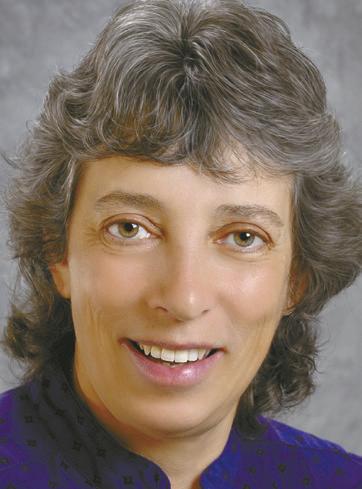







ing behavioural health, outpatient clinical services, early intervention and preschool programs, residential and respite care, day habilitation options, community support services, adaptive sports programs and specialized dentistry. We provide services from birth through the lifespan.
Q: Could you give the readers a few details of your programs?
A: We assist preschoolers, both with and without disabilities, who may need assistance reaching their developmental milestones and in preparation for their K-12 career. We serve individuals within our clinics who have either suffered an injury or who may have a diagnosis that impacts their activities of daily living and work with them to maximize their independence in those areas. We offer habilitative services, assisting individuals both within center-based and community settings to work on their personal goals and assist with community engagement. Additionally, we have certified and uncertified housing options for individuals. Our certified residential programs are certified and monitored by OPWDD (the New York State Office for People with Developmental Disabilities). We also have a non certified transitional apartment building designed to help people who wish to gain the skills necessary to live as independently as possible in a community-based residence.
Q: Are there other CP Rochester programs that you feel are important for people to know?



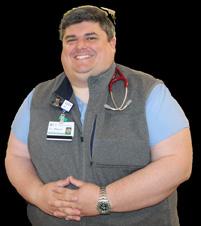




Ability Partners CEO discusses role CP Rochester plays in supporting those with developmental, intellectual and physical disabilities in the region
By Mike Costanza
CA: Yes, our Family Dental Center. Serving more than 1,000 children and adults annually across Rochester and nearby counties, the dental center provides vital oral health care for vulnerable populations who may struggle to find accessible services elsewhere. The center is dedicated to creating positive dental experiences for all its patients.




P Rochester offers a host of programs for adults and children who have intellectual, developmental and physical disabilities, including preschool, day habilitation and residential programs and clinical treatment programs. It even has a dental clinic for those in need of oral care.
Q: Whom does it serve?
A: Individuals with developmental, intellectual and physical disabilities, including those with cerebral palsy and acquired disabilities, such as traumatic brain injury. CP Rochester provides a wide range of quality health, educational, residential and support services for them and their families in Livingston, Monroe and Orleans counties.
Q: Almost 90% of CP Rochester’s revenue comes from federal and New York state reimbursements for its services. How well has that met your nonprofit’s needs?



With only about 250 employees and a current budget of $16 million, CP Rochester currently helps about 2,500 people of all ages find their own pathways in life. The nonprofit is part of Ability Partners Inc., a combination of three local nonprofits that have banded together to improve their operations and cut costs through cooperation and the sharing of resources. The other two are Rochester Rehabilitation and Happiness House.
In Good Health talked to Darrell Whitbeck, president and CEO of Ability Partners Inc. and the three nonprofits under its umbrella, about CP Rochester, its challenges and the ways it might overcome them.
Q: What is CP Rochester’s mission?
A: To support individuals of all ages and abilities as they determine their own pathways by partnering with them, their families and their communities to fulfill the individual’s right to live a productive and rewarding life.
Q: Can you give the readers an example of the kind of person who might make use of CP Rochester’s services?
A: They often face significant physical, developmental and intellectual challenges that can impact many areas of daily life, including mobility, communication, social interaction and behavioural health. For example, an individual with cerebral palsy may experience difficulties with motor skills that make it challenging to complete daily activities independently. Additionally, some individuals may benefit from assistance meeting educational challenges or accessing opportunities for greater social inclusion, while others may need medical care.
Q: What services do you offer your clients?
A: CP Rochester is dedicated to providing a comprehensive array of health, educational, residential and community support services, includ-
A: Due to chronic under-funding, agencies like ours have struggled with staffing for well over a decade. It was just exacerbated by the pandemic. With the chronic under-funding, our reimbursement rates rarely even keep pace with inflation. Each year gets a little bit more challenging than the last. Our dental clinic is very challenged to meet the costs associated with providing the service. In order to keep it running we have to seek grant funding and fundraising. Based on the good that it gives, it makes a lot of sense to continue to provide that service.
Q: What other steps has CP Rochester taken to deal with its financial challenges?
A: Our response is to form partnerships like the Ability Partners umbrella that allows us to decrease our costs. We can be more efficient across the agencies when we’re together. If all of the nonprofits wait for the funding to correct, it’s just not going to happen at the rate that it needs to.
For more information on CP Rochester, go to: www.cprochester. org
For more information on Ability Partners, Inc., go to: www.abilitypartners.us

Atrio of risk factors not only increase your risk of stroke, but they also raise the odds that such a stroke will be debilitating, a new study warns.
What are these three big dangers? Smoking, having high blood pressure and suffering from atrial fibrillation all significantly raise the risk of suffering a severe stroke, researchers reported Nov. 13 in the journal Neurology.
“Stroke can lead to disability or even death, yet there are a number of risk factors that people can modify with a change in lifestyle or medication,” said investigator Catriona
Reddin, a geriatrics researcher at the University of Galway in Ireland.
“Our results emphasize the importance of managing risk factors for stroke, especially high blood pressure, atrial fibrillation and smoking in order to prevent severe, disabling stroke,” Reddin added in a journal news release.
Severe strokes result in people being unable to walk or care for themselves without assistance, researchers said. These patients require constant nursing care for the rest of their lives.
For the study, researchers tracked nearly 27,000 people from 32 coun-




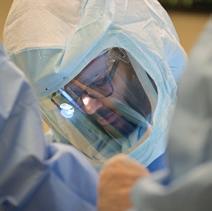








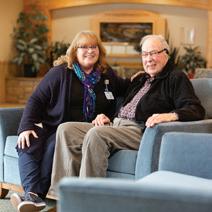
tries with an average age of 62. Of this group, half had suffered a stroke, including about 4,800 who'd had a severe stroke and 8,600 with a mild to moderate stroke.
After adjusting for other risk factors, researchers found that:
• People with atrial fibrillation — an irregular heartbeat — were 4.7 times more likely to have a severe stroke and 3.6 times more likely to have a mild to moderate stroke, compared to those without the condition;
• Patients with high blood pressure were 3.2 times more likely to have a severe stroke and 2.9 times more likely to have a mild or mod-
erate stroke, compared to those with normal blood pressure;
• Smokers were 1.9 times more likely to have a severe stroke and 1.7 times more likely to have a mild to moderate stroke, compared to nonsmokers.
“Our findings emphasize the importance of controlling high blood pressure, which is the most important modifiable risk factor for stroke globally,” Reddin said. “This is particularly relevant for lower- and middle-income countries that have rapidly increasing rates of high blood pressure and strokes at younger ages.”

•
•
•
•
By Deborah Jean Sergeant
Water flossers such as Waterpik look and generally work like mini power washers. But do they replace conventional cleaning with dental floss?
“The recent studies show only 32% of adult patients floss daily,” said dentist Alexis Ghanem, chairman of the office of general dentistry department at Eastman Health at URMC. “Patients don’t use regular floss because it takes a little training and dexterity. If you don’t use dental floss between the teeth, you can get gum diseases.”
The water flosser offers ease of use compared with conventional floss. Ghanem said that most of his older patients like water flossing for this reason. But people with orthodontic braces also like water flossing because of their oral hardware, which can be challenging to keep clean with conventional flossing.
Water flossing “reduces gum diseases and plaque,” Ghanem said. “It’s friendly on gums. When you use dental floss, sometimes you have to
hit the gums and it creates bleeding. Water flossers are gentler.”
But that doesn’t mean that conventional flossing should go the way of the dodo. Water flossers require potable water and electricity — not the best option if you’re camping, for example.
Ghanem said that water flossers “might not remove all the plaque as regular floss. Regular floss is very effective as you can use it interdentally and you don’t need power or water. It’s more affordable and more widely available.”
Using water flossers properly can help improve their effectiveness.
Following the directions from the manufacturer and asking for advice from the dentist or hygienist can help ensure the best outcomes of water flossing.

If either choice — water flosser

or conventional floss — are used correctly, they work well at keeping teeth clean. However, Ghanem said that getting between teeth is harder with a water flosser.
In addition, floss picks — the tiny bits of floss on a stem — may help clean teeth for people who want to use conventional floss, but struggle with dexterity. But avoid jabbing the gums with the pointed end, which can irritate them.
The bottom line is that “brushing is not enough,” Ghanem said. “You need to add another technique of cleaning to make your gums healthy. Myself, I use dental floss after I brush and small plastic picks that if you use them correctly, they help a lot. There are some kinds of picks that can irritate the gums, but some are very soft and gentle so you can use them. They work perfectly to clean your teeth. It all comes down to skills and how to work with them.”
Sadly, some patients don’t worry about preventive care. They tend to make appointments only when they experience pain or something else is going wrong. Too often, that can mean a more costly repair or even an extraction.
“Try to see your provider more often, at least twice a year and dis-
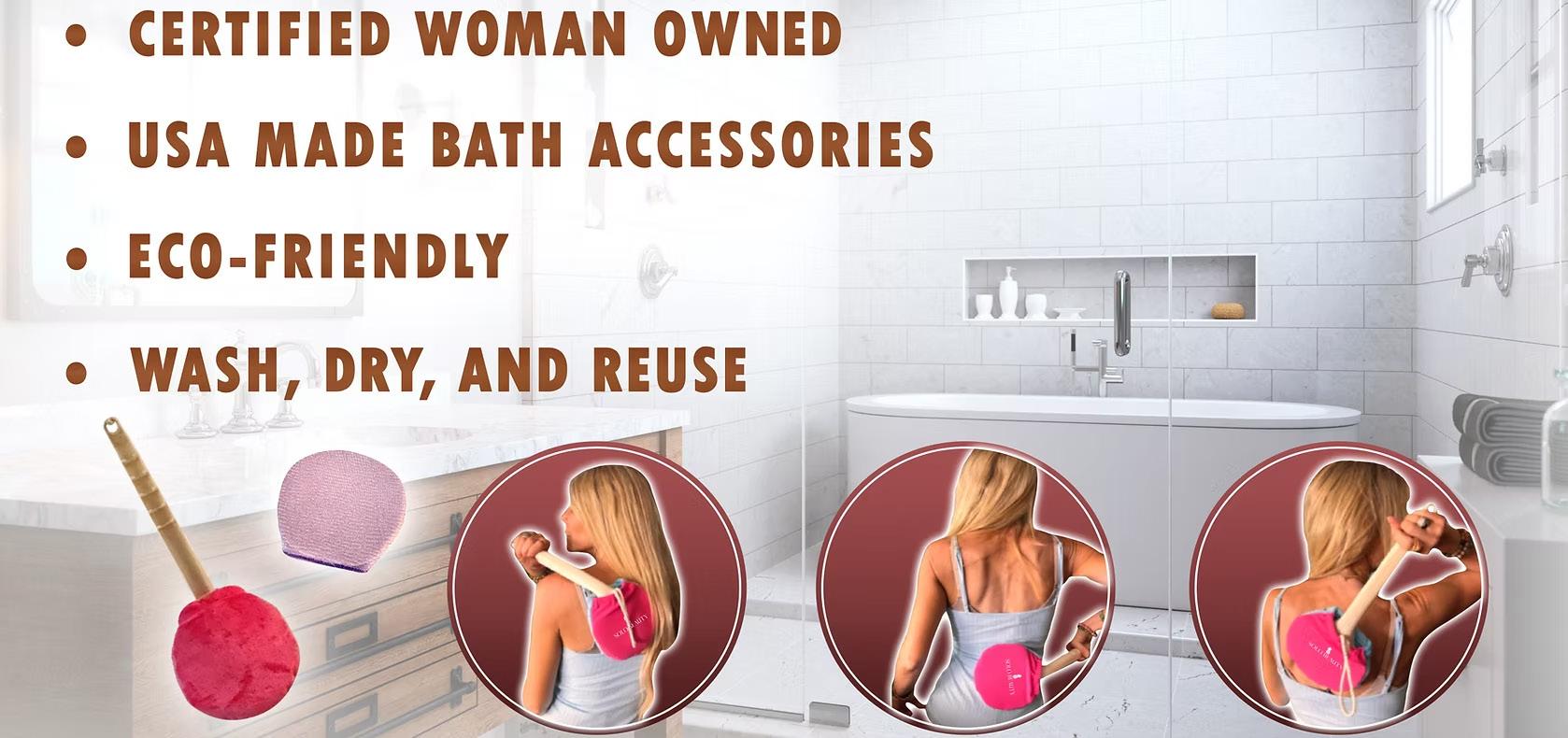

cuss with providers the good techniques for home care,” Ghanem said.
Never worry that your dental issues will shock or dismay your provider.
“Every patient has dental problems,” Ghanem said. “Discuss the best skills for keeping oral hygiene.”



E.
of


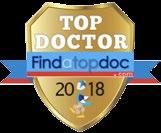


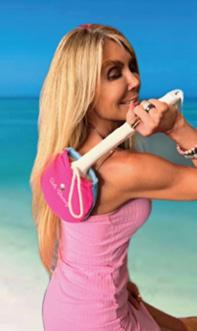









to enjoy your trip and not feel like a zombie when you arrive
By Deborah Jeanne Sergeant
If you fly eastward and feel overtired, crabby and out of sorts later that day or the next, jet lag is likely the culprit. But you can enjoy your trip without severe jet lag if you plan.
Patty Bean, owner of Bean Cruises and Travel in Rochester, has a few strategies for minimizing jet lag. While flying, she won’t indulge in alcohol, but she does drink plenty of water.
“It’s a gamechanger,” Bean said.
She explained that the cabin of airplanes is often dry. Becoming dehydrated only adds to jet lag misery. Bean skips taking sleep aids on the plane, as it’s better to wait on sleeping to synch it with the destination’s sleep cycle.
Eating right also helps combat jet lag. Bean warned that in European countries, people typically eat dinner later, so don’t arrive famished.
“Don’t plan anything big for the day you arrive,” Bean said. “Just take it easy. You can go do something the next day.”
Chris Van Zile, travel agent with
“When I land, I try to avoid going to sleep,” she said.
Instead, she checks her bags into the hotel and spends some time outside in the sunshine to reset her circadian rhythm. A brisk walk and some coffee help her stay awake as long as she can. That evening, she may take a sleep aid or melatonin. By the next morning, she feels fine and ready to tackle the day.
Returning to Rochester from locations like Tahiti is tough on Van Zile.
“It’s a long, long flight and if people can afford it, do a stopover on the west coast and stay overnight to do the next flight the next day,” she said. “A stopover depends on the destination and how long your flights are.”
No one wants to feel ill while traveling. As disrupted sleeping and eating patterns associated with travel can contribute to illness, Van Zile tries to boost her immune system by taking Airborne, a vitamin C supplement in an effort to resist illness.

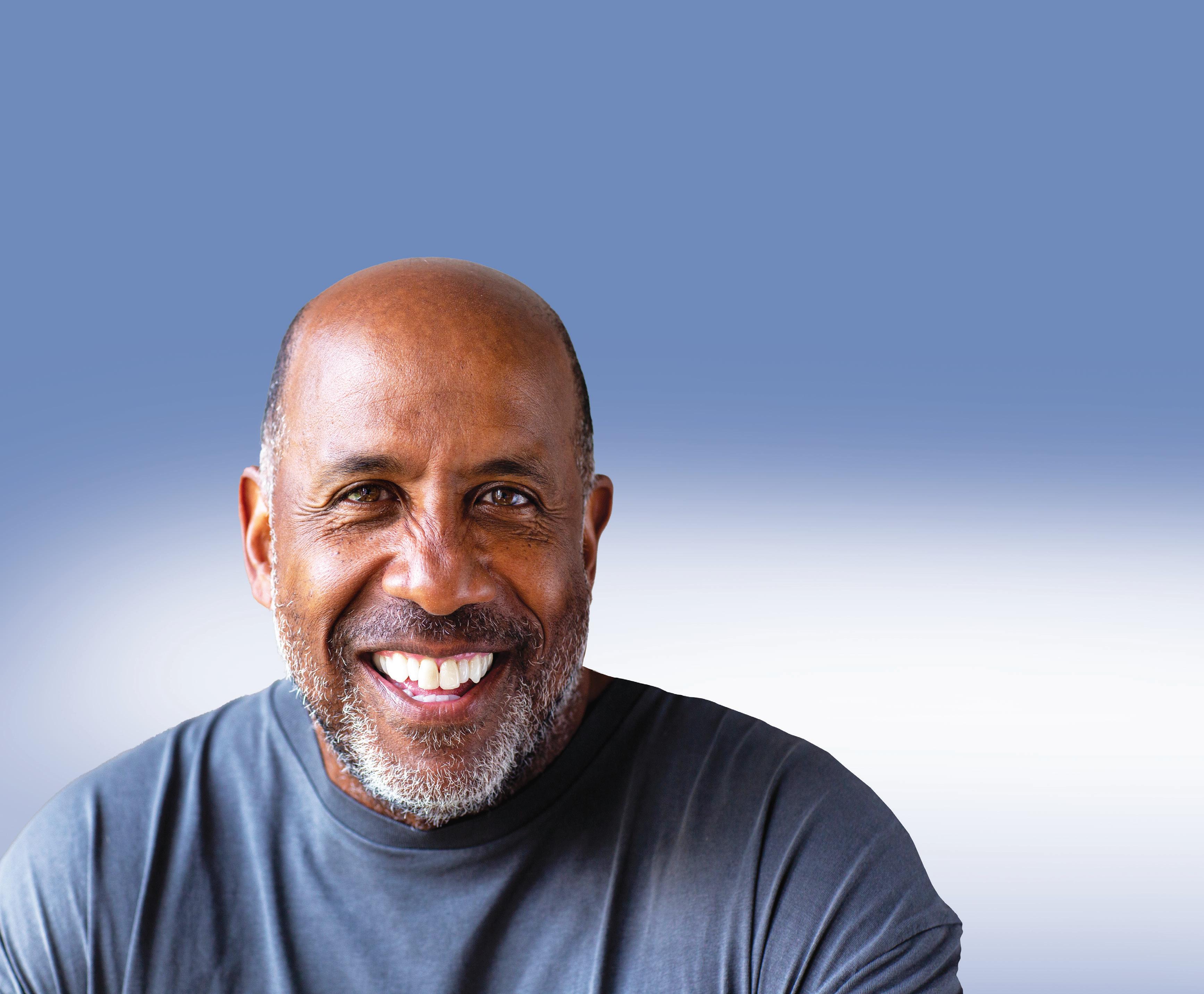



By Shaina Zazzaro
1. Stay away from the cheese platter. I know you love cheese, I do too. But when I lost my initial 60 pounds I cut cheese out of my diet almost completely and I stopped grazing on cheese platters. One ounce of cheese is practically nothing and it is filled with calories, 114 to be exact. Grazing on cheese and crackers before your holiday meal could easily add on a quick 500 calories.
2. Avoid mixed drinks. If you want to drink alcohol, I get it. I will never tell you not to enjoy a glass of wine as I certainly love wine. But if you are going for a cocktail made with juices or a yummy chocolate martini, you could be drinking 400 calories in one drink. Save your calories for your food.
3. Prioritize protein. Do that on your plate, then add your veggies and put starches last. Protein is going to keep you fuller much longer than a plate of
all carbs.
4. Go light on salad dressings. Be careful with salads. Just because you have a bowl of greens doesn’t mean it is necessarily low calorie if you dump ranch dressing on it unmeasured. Find a fat-free dressing or when in doubt use balsamic vinegar.
5. Don’t go for seconds. Why do you need two plates of food? Your body needs one plate for energy. Going for seconds got me in trouble and caused me to be very overweight. One plate of food is enough. Eat it slow, enjoy it.
6. Taste your food when you are eating. When you are eating food you don’t even taste it. Make sure you eat your food slowly so you can enjoy it. Take small bites and take your time. You waited all year for your holiday dinner, why are you rushing it?
7. Be careful with desserts. I love sweets, they are my weakness. But the calories in a dessert add up fast. Pick one thing that you really want to enjoy and indulge. Don’t get a whole plate of desserts and be careful with holiday cookies. Cookies are at least 120 calories each, so indulge carefully.
8. Drink water before and during your meal. Drink a glass of water 30 minutes prior to your meal and you will feel more satiated.
9. Eat your effortlessly healthy meals religiously before a holiday. Eating portion-controlled meals will keep you on track so you can indulge this season without adding a bulge to your waistline.
10. Exercise. Get your steps in and exercise regularly.
When you have adapted a healthy lifestyle, you will be more apt to want to keep on track during the holidays and not ruin your progress.
Planning your new year’s weight loss resolution? www.ehmeals.com is ready to help you.
“Have a question for Shaina Z? Ask her on Instagram @shainazazzaro.
Shaina Zazzaro is a devoted wife and mother of two, blending her roles with a passion for health and wellness. She is the owner and chief executive officer of local meal delivery service, Effortlessly Healthy. For more information, visit www.ehmeals.com.
Four out of five men and women in the United States will be overweight or obese by 2050 if current trends hold, a new study warns.
About 213 million Americans aged 25 and older will be carrying around excess weight within 25 years, along with more than 45 million children and young adults between the ages of 5 and 24, researchers reported Nov. 14 in The Lancet journal.
Worse, obesity is projected to increase at a more rapid rate than overweight, researchers say.
By 2050, two in three adults, one in three teens and one in five children in the United States are expected to be obese, researchers estimate.
All these extra pounds will create a crisis of chronic illness in the nation, said lead study author Emmanuela Gakidou, a professor with the Institute for Health Metrics and Evaluation (IHME) at the University of Washington.
“Overweight and obesity can trigger serious health conditions — many of which are now occurring at younger ages, including diabetes, heart attacks, stroke, cancer, mental health disorders and even premature death,” Gakidou said in a journal news release. “The soaring health system and economic costs will be equally pervasive, with over 260

million people in the USA, including over half of all children and adolescents, expected to be living with overweight or obesity by 2050.”
For the study, researchers estimated future overweight and obesity rates by combining 134 unique data sources, including major national surveillance survey data, researchers said.
They found that nearly three-quarters of the adult population was overweight or obese in 2021.
Obesity in particular has increased rapidly, doubling between 1990 and 2021 in both men (19% to 42%) and women (23% to 46%), researchers found.
“Our analysis lays bare the de-
cades-long failure to tackle the growing overweight and obesity epidemic in the USA,” Gakidou said.
The highest levels of obesity are in the South, and that trend is expected to continue into the future, researchers said.
For example, two-thirds of men in West Virginia and Kentucky and two-thirds of women across 12 states are expected to be obese by 2050. Especially high rates of obesity are predicted for Mississippi, West Virginia, Arkansas and Illinois.
Researchers also found that people are becoming obese at earlier ages.
About two in five women born in the 1960s were obese by age 45,
but the same proportion had become obese by age 30 for those born in the 1980s, researchers found.
The new analysis found that teenage obesity rates more than doubled in the U.S. between 1990 and 2021, from 9% to 23% in boys and 10% to 29% in girls.
In 2021, an estimated 15 million children and teens and more than 21 million young adults were overweight or obese, results show.
The study predicts that an additional 3.3 million children and teens and another 3.4 million young adults will be overweight or obese by 2050.
The rising tide of adolescent obesity is projected to reach the highest levels among young adult men in Oklahoma (43%), Mississippi (39.8%) and West Virginia (37.7%) in 2050, and affect at least half of young adult women living in Mississippi, Arkansas, Oklahoma and Alabama, results show.
However, the largest numbers of young obese adults will continue to be in California (1.53 million) and Texas (1.49 million) in 2050.
Cutting-edge weight-loss drugs like Wegovy and Zepbound might help some control their weight, but to head off this trend policy makers will need to focus on ways to promote healthy weight beyond telling people to eat less and exercise, researchers said.
By Anne Palumbo
Raise your hand if you only eat oats for breakfast.
Now, raise your other hand if you were raised on single-serving packets of instant oatmeal.
Both hands up? Mine, too.
Just thinking about the maple and brown sugar flavor fills me with dreamy nostalgia.
But that was then. These days, I go for healthier versions of oats, including savory dishes. Yes, savory! What’s more, I consume this superfood daily.
Like many Americans, I suffer from high LDL cholesterol, the bad kind that clogs the arteries that feed the heart and brain. This stealthy buildup, as many studies have shown, can lead to heart attack, stroke and other health problems. While my level isn’t high enough for cholesterol-lowering medication, it is high enough for lifestyle changes.
According to Harvard Health, adding foods that lower artery-clogging LDL cholesterol is the best way to achieve a low-cholesterol diet.

And the food at the top of many lists? Oats!
Loaded with whole-grain goodness, oats stand out for their soluble fiber, the coveted fiber that binds cholesterol in the digestive system and drags it out of the body before it gets into circulation. This type of fiber also keeps you feeling full for hours, which can help with weight control. Carrying extra weight raises your chances of having too much bad cholesterol in your blood, with every 10 extra pounds producing as much as 10 milligrams of extra cholesterol daily.
Multiple studies suggest that those who have or are concerned with Type 2 diabetes could benefit from a daily dose of oats. Why oats over other whole grains, like whole wheat or brown rice? Oats (and barley) are the only whole grains that carry a distinctive kind of soluble



fiber — beta-glucan — which forms a thick gel that delays the emptying of the stomach and absorption of glucose into the blood.
Nutrient-dense oats boast a unique combination of vitamins, minerals, and antioxidants. A few superstars include manganese, which improves brain function, lowers inflammation, and is vital to bones; and vitamin B1 (thiamine), which helps turn food into energy, boost memory, and fight depression. One cup of cooked oats has 150 calories, 6 grams of protein, 4 grams of fiber, 28 grams of carbs, and scant sugar.



Since the nutrition profiles are quite similar for the three main types of oats — steel-cut, rolled, and quick — choose the oatmeal whose texture and method of preparation suit you. Steel-cut, the least processed, have a firmer bite while rolled and quick have a smoother, creamier texture. All forms now come in instant versions. Do check the nutrition facts of your preferred oats, especially flavored instant oatmeal. Remember that maple and brown sugar flavored instant oatmeal I adored? A measly ½ cup has 12 grams of added sugars!
Ingredients
2 hard-boiled eggs
1 avocado, sliced lemon juice
3 teaspoons olive oil, divided
3 cups spinach or other greens
¼ cup finely chopped onion or shallot
1 garlic clove, minced
Instructions
Anne Palumbo is a lifestyle columnist, food guru, and seasoned cook, who has perfected the art of preparing nutritious, calorie-conscious dishes. She is hungry for your questions and comments about SmartBites, so be in touch with Anne at avpalumbo@aol.com.

1. Peel and slice hard-boiled eggs; set aside. If making fried, fry up right before serving. Slice avocado, drizzle with lemon juice, and set aside.
2. Heat 1 teaspoon olive oil in small saucepan over medium-low heat. Add the greens, lightly sauté until wilted (about 1 minute), remove, and set aside. In same pan, heat remaining oil over medium heat; add shallot or onion and cook until softened, about 2 minutes.
¾ cup instant rolled oats (or preferred oats)
1¼ cups water
Salt and coarse black pepper
½ cup black beans
cherry tomatoes, sliced ¼ cup cheese of choice
Hot sauce or pesto
Add-ons: toasted nuts or seeds, fresh herbs
3. Add the oats and garlic and stir to coat in oil; then add the water and bring to a boil. Reduce the heat and simmer, stirring occasionally until the oats are thick and creamy, about 5 minutes. Season to taste with salt and pepper.
4. Remove from the heat and portion into bowls. Top with the sautéed greens, egg, avocado slices, beans, cherry tomatoes, and sprinkle of cheese. Serve with drizzles of hot sauce, a squeeze of lemon juice, and other add-ons.
By Kimberly Blaker
Are you tired of spending hours, days, or weeks scouring the planet for just the right gift? Only to find yourself giving the usual standby, such as a sweater or bottle of cologne? After a while, doling out the same boring gift feels like giving a worn-out consolation prize.
This year, try one of these gift ideas that'll elicit surprise and enthusiasm for your thoughtfulness.
• Concert tickets. Whether the person on your list is a rock-n-roller or symphony fan, a pair of concert tickets will be a sure pleaser, especially if you can swing the best seats.
• Dinner at a posh restaurant. The old adage goes, the way to a man's heart is through his stomach. Women enjoy gourmet dinners just as much. So give a gift certificate to a top-notch restaurant that your recipient's reluctant to splurge on. It's the perfect way for the person on your list to enjoy a gourmet meal without guilt.
• Golf package. Give a round of golf at an elite course or a weekend away at a favorite golf resort.
• Massage certificates. This luxury is sure to please. Best of all, you can find plenty of great deals for massages at Groupon.com.
• Chef supplies. Who says kitchen appliances and gizmos are for women only? Men who enjoy playing chef will appreciate the tools to create their gourmet dishes. Consider a top-quality butcher block knife set,
rotisserie, food processor, blender, or crockpot.
• Sporting event tickets. Whatever your gift recipient's favorite sport, a pair of tickets, particularly to a top rival game, is sure to be a hit.
• Remote car starter. This is an excellent gift for both hot and cold climates. With a remote starter, your recipient can heat or cool their car before stepping out into uncomfortable temperatures.
• Magazine subscription. Whether the person on your list is a sports fan, outdoors person, world traveler, hobbyist, professional, or business owner, there's a magazine out there for every niche.
• Gadgets. A person can never have too many of these. How about a Bluetooth speaker or headphones, multi-device charging valet, night vision binoculars, heated ice scraper, smartphone Wi-Fi storage, espresso maker, or wireless TV speakers?
• Record player & LPs. These are again gaining popularity. You can find collectible vintage record players as well as brand new ones online in every price range. Look for LPs at vintage record stores, antique malls, or online.
• Audiobook subscription. If the person on your list loves to read but just doesn't have time for it, an audio subscription may be the perfect alternative. Your recipient can download books to his or her smartphone
By Deborah Jeanne Sergeant
Are any people on your list homebound? A thoughtful gift can provide a meaningful gesture that indicates they are very special to you.
Most homebound people who are older already have plenty of tchotchkes. Focus on gifts that are consumable and usable.
“So many like puzzles and crossword books and sudoku to keep mentally active,” said physician Az Tahir, practicing in functional medicine in Henrietta.
Older adults on tight budget may appreciate a fresh fruit basket, gourmet pasta basket or fancy chocolates (keep any dietary restrictions in mind).
“I also would give healthy foods that fit in with their diet,” Tahir said.
Many homebound people find it difficult to exercise. Tahir recommends exercise bands and lower body “peddlers” as these can help encourage exercise at home. Light hand weights can also help promote activity as well.
Consider the person’s mental acuity. Someone with later stage

or iPod. Then they can listen while working out or on the drive to work.
• Music download subscription. One can never have too much music. Find subscriptions for music downloads at Amazon, Napster, iTunes, eMusic, and Spotify, to name a few.
• Annual nonprofit membership. Make the person on your list a card-carrying member of the National Audubon Society, Earth Policy Institute, Republican National Committee, Democratic National Committee, National Coalition for the Homeless, American Humane Society, or another organization that fits their interest. Most organization memberships include periodicals, among many other benefits.
• A trip or weekend away. This gift could be as simple as a nearby weekend away for rest and relaxation or a week-long adventure to a favorite destination. Watch for travel deals at Travelzoo, Travelocity, Google Flights, Airfairwatchdog, and Kayak.
• Museum membership. Is the person on your list an art enthusiast or history buff? If so, look for museum memberships in your recipient's nearby metropolitan area. In addition to free entrance, museum memberships typically include extra perks such as entry into special exhibitions, discounts on special events, and periodic newsletters.
dementia, for example, may enjoy a different sort of gift than someone who struggles only with physical challenges. For the former, “Gifts can hold significant meaning,” said Jessica DesRosiers, senior director, programs and services office of the Alzheimer’s Association.
Gifts can offer an emotional connection as they “evoke memories and emotions, helping individuals feel connected to their past and loved ones, even when their memory may be impaired,” DesRosiers said.
A digital photo frame loaded with family photos may be a good gift. Consider labeling each photo before loading it onto the frame. (Use large print so it’s readable for someone with poor vision.)
Order a custom pillow or blanket printed with a favorite photo. A cozy robe and slippers are classic gifts for homebound people. If you give clothing items, consider the person’s physical challenges and choose items easy to get on and off. For example, a zippered nightgown is easier to change than one with a long row of tiny buttons. Or choose a ¾ zippered

pullover shirt instead of a crew neck shirt. Shirts with small-sized armholes are tougher to get on than those with a raglan sleeve.
“Thoughtfully chosen gifts can engage the senses — like soft blankets, musical instruments or photo albums — which can be comforting and enjoyable,” DesRosiers said.
“Personalized gifts can help reinforce a sense of identity and self-worth. Items that reflect a person's interests or past can remind them of who they are.”
Consider giving a set of bath and body products in their favorite scent. Or a shirt emblazoned with their favorite team or other personal interest.
Gifts that encourage any kind of activity such as art supplies “can stimulate cognitive function and provide opportunities for engagement and creativity,” DesRosiers said. An art kit may come with everything needed to complete a project. However, if the person is incapable of making the project turn out well, that can lead to frustration. Since there’s no wrong way to paint, draw or sculpt, the gift of loose art supplies can help the person with self-expression without aggravation. Select art supplies that are easy to clean up and that don’t require fine motor skills if the person struggles with these.




WIGS FOR ALL REASONS
High quality wigs & hair pieces in a variety of styles & blends. We take care of all medical conditions related to hair loss.
Grasta's Beauty & Wig Studio By appointment only. No walk-ins. 585-392-7823
Sharon Grasta, owner & operator

GIVE THE GIFT OF WELLNESS
Gift Certificates Available.
Providing holistic wellness treatments to promote greater health and well-being! Vibrational reiki, sound therapy/ immersion, integrated energy therapy, Cranial Sacral, guided meditation, workshops & crystal and jewelry gift shop.
Healthy Alternatives
Wellness Center
Carol Morissette, LMT, CST Call/text 585 663-6454 www.healthyalternativesrochester.com



Rochester’s #1 prepared meal service. Effortlessly Healthy meals are fresh, never frozen, chef prepared, and hand-delivered to your door! A perfect gift for a loved one from the busy executive to the healthy senior in you life. 20% off your first week. Visit www.ehmeals.com — USE INGOODHEALTH coupon code at checkout.
Solo Beauty’s patented applicator has a lotion and shower mitt that will improve those hard-to-reach areas. No more twisting, turning and overextending. Simply reach over your shoulders, back, mid back, feet, and body. The mitts can be washed, dried, and reused. BUY FOR YOURSELF OR A LOVED ONE!
Stop in at Solo Beauty 1945 East Ridge Road, Suite 6, Rochester, NY 14622 or call 585-737-8600



GIVE THE GIFT OF TLC HOUSE CALLS
Gentle, complete, thorough service. Customized to your needs. Appropriate for the entire family. Geriatric and diabetic specialty. Andrea’s Foot Care Home Foot Care Service
Advanced Foot Care For gift certificates call 585-381-4297 Andreasfootcare.com


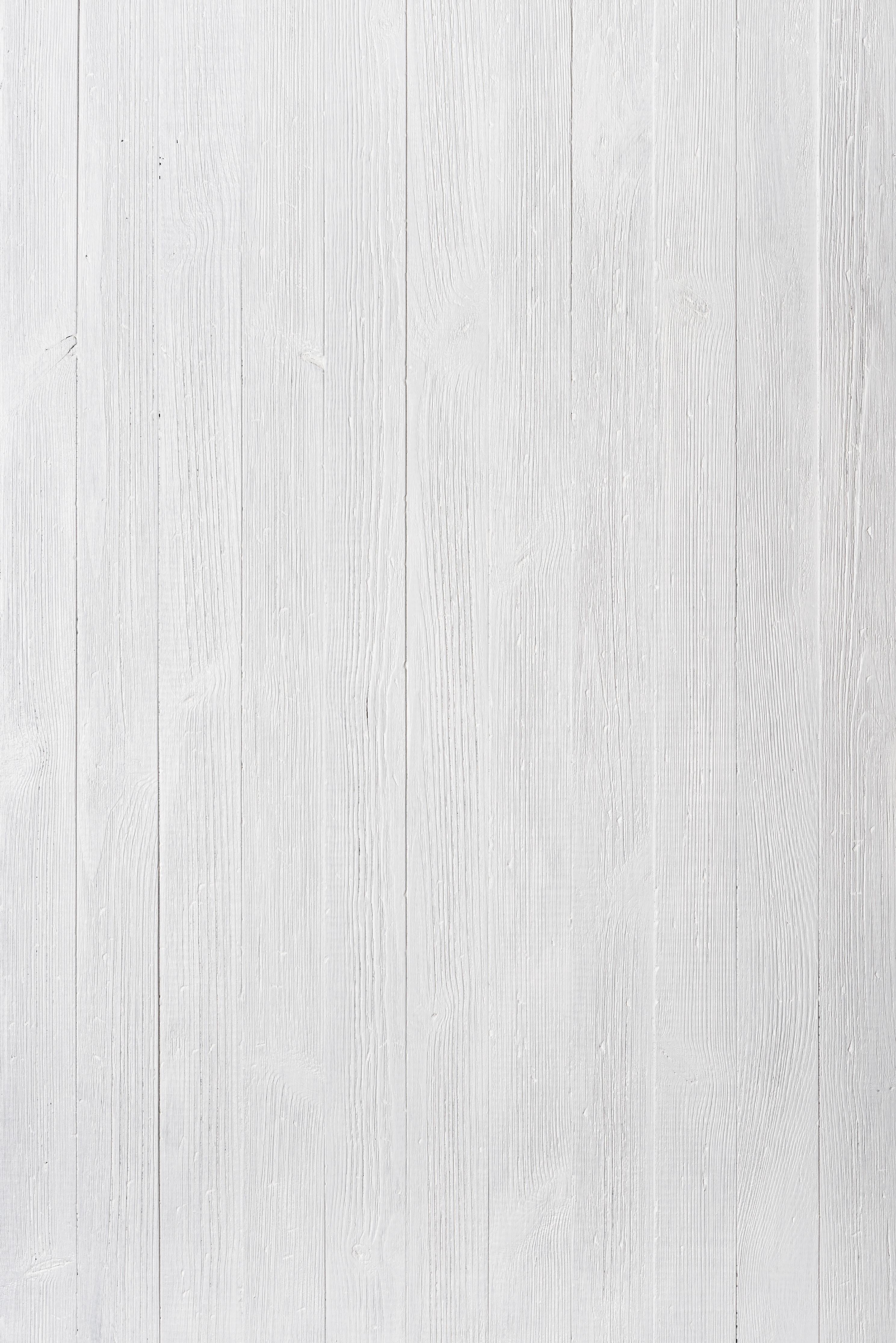



Drainage Massage Session. Gentle massage technique with powerful effects. Boosts overall health in many ways including detoxifying and strengthening immune system. Gift certificates available.
Call Carol McCoon, LMT (585) 742-1969
SingingWindSoundTherapy.com singingwind00@hotmail.com For gift certificate or appt.

During the holiday season, people often find themselves feeling stressed and overwhelmed by a dizzying array of seasonal demands, including parties, shopping, baking, cleaning and entertaining.
The holidays may also highlight family issues, conflicts, political differences, and loneliness. Then there’s the challenge of excessive eating and financial concerns arising from unreasonable spending on gifts. So how can we enjoy ourselves, our family and our friends?
Jeffrey Borenstein, a Manhattan-based psychiatrist and president and CEO of the Brain & Behavior Research Foundation, outlines practical steps people can take to dial down their stress and anxiety during the season.
“With a little planning and some positive actions, you can minimize the stress that so often accompanies the holidays,” says Borenstein. “You may even end up enjoying yourself more than you thought you would!”
• Give yourself a break. Make time for yourself and try simple activities that make you feel better. Exercise, for example, is a natural antidepressant that can lift your mood by boosting endorphins — natural chemicals in the body. You don’t have to run a marathon. Even a casual walk can be a big help. Find something that clears your mind, slows your breathing and restores inner calm.
• Learn to say no. By saying yes when you should say no, you can feel resentful and overwhelmed. Friends and colleagues will understand if you can't participate in every project or activity or host a big holiday party at your home.
• Forget perfection. Striving for
perfection — the perfect tree, dinner, decorations, gift wrapping — can be anxiety-provoking and extremely stressful. Be kind to yourself by focusing more on enjoying time with yourself and others, and less on trying to have a storybook holiday season.
• Be open to change. As families change and grow, traditions and rituals often change as well. Choose a few to hold on to and be open to creating new ones. For example, if your adult children can't visit, celebrate together in other ways, such as sharing pictures, emails or videos.
• Set aside family differences. Try to accept family members and friends as they are, even if they don't live up to all your expectations. Set aside grievances until a more appropriate time for discussion. And be understanding if others get upset or distressed when something goes awry. Chances are they're feeling the effects of holiday stress also.
or friends ahead of time to help with party preparation and cleanup.
• Stick to a budget. Before you go gift and food shopping, decide how much money you can afford to spend. Then stick to your budget. Don't try to buy happiness with an avalanche of gifts. Try alternatives, like donating to a charity in someone’s name, giving homemade gifts or starting a family gift exchange. Perhaps you and your family can agree to skip the gifts completely, and just enjoy fun times together during the season.

Jeffrey Borenstein is the president and CEO of The Brain & Behavior Research Foundation. The organization awards research grants to develop improved treatments, cures, and methods of prevention for mental illness. For more information, visit https://bbrfoundation.org.
• Maintain healthy habits. The temptation to cope by self-medicating, binge eating or excessive drinking coincides with the party spirit of the holidays, which can increase negative feelings. Try not to over-indulge. Alcohol, for example, is a depressant and can increase feelings of depression, stress, anxiety and guilt. Consider these suggestions: Have a healthy snack before holiday parties so you don't go overboard on sweets or drinks; get plenty of sleep and drink plenty of water to stay refreshed.
• Acknowledge your feelings. If someone close to you has recently died or you can't be with loved ones, realize that it's normal to feel sadness and grief. It's OK to take time to cry or express your feelings. You can't force yourself to be happy just because it's the holiday season.
• Connect with people you trust. If you feel lonely, seek out trusted friends, if possible, or attend community, religious or other social events
that offer support and companionship. Volunteering your time to help others is another good way to lift your spirits.
• Make a plan. Set aside specific days for shopping, baking, visiting friends and other activities. And make lists. That will help prevent last-minute scrambling. Ask family
• Make realistic New Year’s resolutions. Most people don’t keep the resolutions they’ve made the year before. If you make a resolution, pick something realistic and short term ¬– maybe something you can handle in the month of January – a simple goal you can achieve without adding more stress to your life.
• Seek professional help if you need it. If despite your best efforts, you find yourself feeling persistently sad, anxious, irritable and hopeless, unable to sleep or face routine chores, seek help by talking to your doctor or a mental health professional.

By Deborah Jeanne Sergeant
Using an anxiety app won’t replace help from a credentialed professional. However, these apps have merit in helping people who struggle with anxiety.
“They can help in a lot of ways, especially if you’re a visual person,” said Lucas Gleber, mental health therapist with Rochester Regional Health. “They tend to help people learn as they are usually organized in intuitive ways about that topic in that moment.”
For example, if someone is interested finding out about meditation,
the app Headspace can offer tips as well as relaxation techniques.
Apps for anxiety can be as general as Headspace, created for a general usership or as specific as Act Coach, an app developed by Veteran Affairs. Geared towards values-minded veterans, “it helps us learn mindfulness, getting in touch with our values and learning how to practice acceptance to thoughts and feelings,” Gleber said.
Brianna Wolf, licensed mental health counselor at Newark Community Health, said that of the many



apps that focus on mental health, some are simple journals or offer general mental health exercises and others focus on specific skills.
“There are ones that connect you with mental health services like therapy,” she added. “They have become a great part of helping ease mental health symptoms like anxiety.”
Many people don’t know the first place to start once they want to receive professional help. Wolf said that apps like Better Help and Talk Space help connect them.
“Journaling apps like the ones built into Apple iPhone technology allow you to get those anxious thoughts out of your head — an app form of thought processing,” Wolf said. “Emotion regulation tracker apps like Kinder World: Cozy Plant Game allow you to track your anxiety (or other emotions) while growing a plant and connecting to others struggling with the same.”
If you’re not sure what apps will help, many of them offer a free trial and many apps offer an “entry level” use for free so you can discover what works for you. Although apps cannot necessarily resolve mental health issues, “they are helpful for identifying any patterns in emotions, learning new skills and connecting with others who may be able to help,” Wolf said.
Reach out to your county department of health for help in connecting with a therapist. Many can accommodate virtual visits if meeting in person is inaccessible for you and most insurance types will cover virtual visits the same as in-person visits.
Try These Apps for Easing Anxiety
• Headspace ($12.99/ month) — Adults may find it useful.
• Aura ($15/month) — Interested in trying a few different approaches to anxiety? Aura may provide guidance.
• BetterHelp ($60-$90/ week) — Need professional help? Search here and connect with a therapist for virtual sessions.
• Sanvello ($8.99/month) — This app provides many tools for users who like to take charge of things themselves, plus peer support. It’s ideal for people with moderate anxiety and depression.
• Calm ($12.99/month) — Children experience anxiety also. Calm may offer helpful tools.
• Breathwrk ($9/month) — Slowing breathing can promote relaxation.
• Sleep Reset ($75/ month) — If you’re anxious, you’re likely not sleeping well.
• Real ($24/month) — Too busy to work on your anxiety? Real is a good bet for you.
• Medito (free) — One of the better free apps, try Medito.










Why not give a healthful
By Deborah Jeanne Sergeant
During the longest, darkest days of winter, caring for a living herb plant indoors can bring some much-needed green to the home, in addition to spicing things up in the kitchen.
“The herb plants can be very, very helpful,” said physician Az Tahir, practicing in functional medicine in Henrietta.
He suggested dill, cilantro and more that can be used in cooking.
“The biggest advantage is that cooking with them at home is they’re the freshest of fresh,” Tahir said. “The herbs you buy dried, you don’t know when they were harvested. They offer a lot of benefit.”
In addition to culinary benefits, Tahir added that growing herbs offers the benefits of growing something in soil. Even seeing green, growing things in one’s environment calms the nervous system and pro-
By Deborah Jeanne Sergeant
The average US child spends about eight hours per day in a sedentary state, according to the National Institutes of Health. Furthermore, excessive time spent as inactive negatively affects a child’s emotional, mental and physical health, both short-term and longterm.
Giving presents that foster play and movement can help increase physically active hours.
“Children need to have plenty of physical activity to remain healthy,” said physician Az Tahir, practicing in functional medicine in Henrietta. “It is very, very important.”
Of course, a membership to a gym or for lessons such as dance or martial arts can keep kids moving, toys they can play with at any time can also increase their activity level, such as a bicycle.
“Table tennis can help them to stay active indoors,” Tahir added.
Although most adults view activity as purposeful, children see it purely as fun if they have the right tools: toys.
“Children exercise through play,” said physician Susan Gasparino, master’s in public health and pediatrician at UR Medicine Golisano Children’s Hospital. She serves as

motes wellbeing.
“God created the herb as a health partner because we need oxygen and we give off carbon dioxide,” Tahir said. “Plants need carbon dioxide and give us oxygen. It’s natural. I promote to my patients to grow their own vegetables. It’s very, very important.”
Deana Cliff, holistic health practitioner and owner of Wholelyfe Healing in Rochester, thinks that
giving herbs “is a great idea. People often think of giving other types of plants like vines that they can’t use. Having those herbs in the house serves a dual purpose. They’re nice to look at and a lot of times give off a pleasing aroma. They’re also useful in cooking as well.”
She noted that some potted herbs serve as natural pest deterrents, as rosemary for example helps ward off spiders and other insects.
Cliff has learned through her own experience that harvesting herbs helps them grow better, which works well for home cooks.
“Having those fresh herbs to add to meals adds a good flavor,” she said. “Dried herbs are little more bitter. Fresh herbs have a more earthy taste to a meal. It’s a unique, cost-effective gift and helps individuals to look at food a little differently. People are thinking of gardening more and this is a good place to explore your curiosity about growing food.”
Potted herbs can also foster more interest in home cooking. Consider giving a potted herb with a recipe card and the ingredients to make a meal, such as oregano, dried pasta, jarred sauce and a pasta server cushioned with a tea towel in a large colander. Or give a basket of hot cocoa mix, marshmallows, mugs and a potted peppermint plant.
Most purchased plants include a small care guide so the recipient will know how to care for their new herb. If not, take a few minutes to research and print a care guide to give with the plant. You could also replant the herb in a decorative planter instead of the typical plastic container from the store.
medical director of clinical and community-based programs at the Center for Community Health & Prevention.
“The CDC recommends physical activity to promote cardiorespiratory health and prevent chronic disease for everyone starting in early childhood. The good news is that running, jumping, climbing, playing catch, kicking a ball and dancing are movements which naturally strengthen muscles and bones and promote aerobic health and which can be a lot of fun,” she said.
Although highly commercialized and advertised, nearly all toys with a screen promote inactivity (except for interactive video games). Instead, Gasparino encourages “old fashioned” and low-technology toys such as jump ropes, bouncy red playground balls, footballs, basketballs and kites to fly.
“Sidewalk chalk to create a hopscotch grid or obstacle course is also a lot of fun,” she said.
Include a black vinyl tablecloth for using sidewalk chalk indoors until summertime.
Not all board games are played seated at the kitchen table. Gasparino likes active games like Twister or The Floor is Lava.
“The concept of the Floor is Lava

Experts suggest giving children presents that foster play and movement, such as a basketball, jump ropes, bouncy red playground balls or kites to fly, for example.
is that the islands set up on the floor are safe spots to jump and land on and the rest of the floor is lava and not safe to touch,” she said.
Instead of using the couch pillows, you can use the “islands” included with the board game. She recommends for small children, mini trampolines with a handrail or musical dance playmats.
For outdoor play, consider a sled, small scooter, wiggle racer car, balance bike or pedal bike.
“You can also give gifts that will get the whole family active,” Gasparino said. “Gifting a zoo member-
ship, joining the YMCA, or signing up for parent-child swim lessons are gifts that can be shared together.”
Although these gifts can encourage movement, “the most important things you can do as a family this holiday season and all year to promote physical activity, is to move together as a family. Taking family walks together, playing active games at home like red light green light, tag or hide and seek don’t cost anything, but have lasting impacts on not only physical health, but social and emotional health as well.”

By Deborah Jeanne Sergeant
The holiday season evokes many emotions: joy, anticipation, peace and love. For some people, it can also contribute to mental health issues as they stress about their many plans, dread unpleasant encounters or feel depression ramp up.
“The holidays are certainly a time when we see an increase in mental health symptoms and stress not only because this is a general time of reflection on the year but there are also a lot of financial and family stressors and a decrease in sunlight typically during these months,” said Brianna Wolf, licensed mental health counselor at Newark Community Health. “When it comes to decreasing stress, it’s important to make sure that you are showing yourself some compassion, reaching out to people who support you, and finding ways to boost those happy hormones.”
You don’t have to do it all
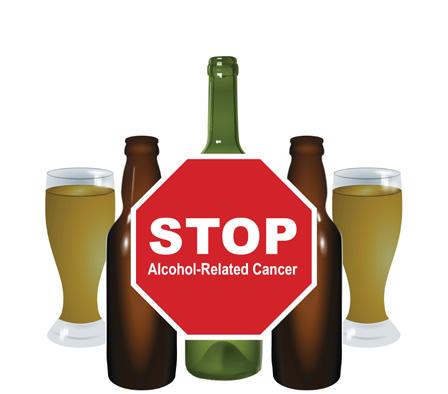
Wyourself — or even “do it all” to begin with. Prune back your plans to reasonably manageable levels and delegate what tasks you can.
No law says you have to make everything homemade or have every single holiday food yourself. Could you assign to your relatives a few of the side dishes for your family gathering instead of cooking it all yourself? Maybe spring for gift wrapping at the store so you won’t have to tackle that task at home. Or use more gift bags to make it easier if you do it yourself.
“You don’t have to have everything perfect in order for it to be a wonderful holiday,” Wolf said.
Instead of hauling out every décor item, choose a few you like and leave the rest in storage for another year. Skip traditions that you and your family decide aren’t that important to you.
Wolf also advised taking a few minutes daily to “ground yourself”

if the stress begins to mount. This could include slowing down for sensory input, like the flavor and warmth of a cup of cocoa or the scent and sight of a Christmas tree.
Busyness should invigorate, not generate stress. Wolf said that writing down holiday tasks can help alleviate stress over them.
Sometimes, it’s other people who bring on the stress during the holidays.
“Call people that make you feel happy and set boundaries with those that don’t,” Wolf said. “You don’t have to go to that party where Aunt Susie always comments on your parenting style or profession.”
If it’s a social obligation you can’t get out of, stay neutral when unpleasant topics arise. The “gray rock” technique means staying as emotionally unresponsive as a gray rock. Some people like to provoke drama and controversy for their own twisted entertainment; others are simply thoughtless and tactless at times. In any case, your business isn’t theirs. You don’t owe anyone an explanation for your life choices or preferences. To diffuse the provocative comments and questions, try phrases like, “Thanks for sharing your thoughts” or “I don’t prefer to discuss that right now.” And change
the subject.
Feel free to step outside or use the restroom to get away from annoying people or conversations and don’t rise to their bait or call out their own bad behavior. No lout has ever said, “Thanks for telling me I’m a rude jerk! I’m going to be kind and polite from now on.”
For some people, the weather during this time of year can impact their mood. Seasonal affective disorder (SAD) is caused by too little exposure to sunlight during the wintertime. If you have SAD or simply feel down during the darker time of the year, you have options other than waiting for longer, brighter days.
“When it comes to boosting those happy hormones, trying out a light therapy lamp for those dark winter days can be helpful, too when used as directed,” Wolf said.
Sitting under a light therapy lamp a few minutes each day may brighten your mood and not just the room.
Lucas Gleber, mental health provider at Rochester Regional Health, said that it can help to acknowledge stress and focus on slowing down and taking time for gratitude.
For tasks that must be done, determine “what needs to be done now, what can wait and what doesn’t need to be done by that deadline,” he said. “It can feel a little less overwhelming. We can focus on one task and break it down to smaller steps. Focus on what we can control. Some things are out of our control.”
Many people remember the way things were in holidays past and long for those times — or wish things had gone differently. To combat sadness from loss or painful memories, Gleber said to practice self-care, including eating healthful foods, exercising and getting enough sleep.
“It helps our mind and body and we have room to handle the stress that comes our way,” he said.
Trying to manage stress without self-care is like trying to pour into a glass that’s already full.
“Self-care is tipping the glass so there’s more room,” Gleber said. “Doing something meaningful can bring value to our lives.”
ith the holidays right around the corner, have you considered taking a different approach for your celebrations? Perhaps consider hosting an alcohol-free party or cutting down on alcohol and offering alcohol-free beverages available to support improved health and well-being during the holiday season.
The International Agency for Research on Cancer (IARC) estimates that alcohol accounts for approximately 4 percent of newly diagnosed cancers worldwide. The IARC has gone so far as to classify alcohol as a Group 1 carcinogen based on strong evidence that demonstrates the causal relationship between alcohol and cancer.
According to the Centers for
Disease Control and Prevention (CDC), alcohol increases a person’s risk for six types of cancer involving the mouth and throat, larynx, esophagus, colon, rectum, liver and breasts. The risk increases with the number of drinks one consumes, therefore the less you drink, the lower your risk for cancer. Drinking three or more alcoholic beverages a day increases the risk of stomach and pancreatic cancers.
How does alcohol cause cancer?
• When we drink alcohol, our bodies turn it into acetaldehyde, the chemical that can damage cells and stop cells from being repaired.
• Alcohol increases the levels of some hormones in our bodies such as estrogen and insulin. Higher levels of these hormones can make cells
divide more often, increasing the chance that cancer will develop.
• Alcohol can damage the cells in our mouth and throat, increasing the absorption of harmful cancer-causing chemicals.
“Research shows that even small amounts of alcohol can carry health risks, including for certain cancers and cardiovascular issues,” according to George F. Koob, PhD, director of the National Institute on Alcohol Abuse and Alcoholism. The more you cut down, the more you can reduce your risk.
If eliminating alcohol is currently not an option, consider following the recommended guidelines from the American Cancer Society and the United States Department of Health and Human Services that suggest

limiting daily alcohol intake to one drink or less for women and two drinks or less for men.
For recipes for hosting an alcohol-free party, please visit the National Council on Alcoholism and Drug Dependence – Rochester Area’s “Alcohol Free Drinks for the Holidays” resource found at: https://ncadd-ra. org/resources/awareness-campaigns/alcohol/.

Jennifer Faringer, CPP-G (Credentialed Prevention Professional—Gambling), is the director of the National Council on Alcoholism and Drug Dependence — Rochester Area (NCADD-RA).






By Jim Miller
The Centers for Disease Control and Prevention (CDC) recommends the pneumococcal vaccines for pneumonia for adults age 65 and older. They also recommended for younger people with long-term health issues or weak immune systems, as well as children under 5 and people who smoke.
Pneumonia, which can happen anytime — not just during the cold months — can be a serious and even life-threatening condition. Each year, pneumonia causes a whopping 1.5 million people to visit medical emergency departments in the U.S. and causes roughly 50,000 deaths.


A recent study found that the use of pneumonia vaccines is associated with a 24 percent decreased risk of death, but vaccination rates aren’t that high.
Around 67 percent of adults over the age of 65 are vaccinated against pneumonia, and just 24 percent of younger people (19-64 years old) at risk for pneumonia are vaccinated. The main reasons for this are because many people are unsure whether they need the vaccine, while others aren’t even aware a vaccine exists.
There are three different vaccines available, some more appropriate for certain people than others. They are the pneumococcal polysaccharide vaccine PPSV23 (Pneumovax23), the pneumococcal conjugate vaccine PCV15 (Vaxneuvance) and PCV20 (Prevnar 20).
The numbers indicate how many strains, or serotypes, of streptococcus pneumoniae are included in the vaccine.
So, which vaccine should you get?
• If you’ve never been vaccinated for pneumonia, the newer PCV20 is the top choice — it covers the 20 most common serotypes now.
• If that vaccine is not available, you can get the PCV15 vaccine, followed one year later by PPSV23.
• If you had the earlier PCV13 (but not PCV15), or the PPSV23 at or after age 65, you’re likely eligible to get the PCV20 for increased protection.
But because of the different possibilities, you need to talk to your doctor or pharmacist about the most effective option for you.
Side effects of these vaccines tend to be mild, but may include feeling achy and tired as well as redness, swelling and soreness where the injection was given.
You’ll also be happy to know that Medicare Part B covers both single dose and two-dose pneumococcal shots, and you only need to get it once. Unlike the flu shot, which is given annually.
Most local pharmacies and community health clinics offer pneumococcal vaccines, but you may want to call ahead just to be sure.
For more information, visit the CDC’s pneumococcal vaccination webpage atCDC.gov/vaccines/vpd/ pneumo/index.html.
To avoid getting pneumonia as a consequence of a viral infection, you should also consider getting a flu shot, RSV shot and a COVID-19 booster in the fall.
While vaccines cannot prevent every case of pneumonia (or other conditions they’re given for), those who get them usually have milder infections, a shorter course of illness and fewer serious complications than people who don’t get vaccinated.
The flu shot and COVID booster are both covered by Medicare Part B, while the RSV vaccine (which is recommended every other year) is covered under Medicare (Part D) prescription drug plans. All three shots can also be given simultaneously.

For those whose aren’t familiar, obstructive sleep apnea (OSA) causes your breathing to pause during sleep because something blocks your airway, like your tongue or relaxed throat muscles. Losing weight, quitting smoking and limiting alcohol can all help ease obstructive sleep apnea symptoms such as snoring.
The primary treatment for people with moderate or severe OSA is a continuous positive airway pressure (CPAP) machine, which keeps your airway open by pumping air through a mask you wear over your mouth or nose when you sleep.
But many people have difficulty
By Jim Miller
tolerating CPAP and don’t stick with it. But CPAP machines have become smaller and quieter, with more comfortable options available. And for some people with mild to moderate OSA, less invasive alternatives to CPAP may be worth considering.
Here are several to ask your doctor about.
• Dental device: This is designed to move the jaw so that the tongue shifts toward the front of the mouth to help keep the airway open. It’s one of the primary alternatives to CPAP and can also be used with CPAP to help make severe obstructive sleep apnea milder.

A dentist who specializes in sleep medicine (find one at dentalsleep. org) will be able to customize its fit to help your breathing without causing harm to your bite or teeth. These custom-made oral appliances can cost between $2,000 and $4,000 but may be covered by insurance.
There are much cheaper options available online to treat snoring, but experts say these may not help with OSA, and could move teeth out of place or cause jaw issues if they’re not properly fitted.
• Position therapy: For some, sleeping on the back can make obstructive sleep apnea dramatically worse. In these cases, switching
to side sleeping — perhaps using pillows or a tennis ball attached to a shirt back — can sometimes help.
• Tongue trainer: In 2021, the Food and Drug Administration approved a tongue-stimulating device for mild sleep apnea called eXciteOSA (exciteosa.com), which people wear for 20 minutes a day for six weeks and then 20 minutes a couple of times a week indefinitely. It costs $1,650 and is not covered by insurance.
• Surgery: Those who can’t tolerate CPAP could have upper airway surgery to reduce the size of their soft palate or other tissue in their throat. But such options don’t always work, have serious potential complications, and cannot be reversed. So, in general, they should not be first-line treatments.
• Inspire: A newer option is a surgically implanted device called Inspire (inspiresleep.com). Approved in 2014, it stimulates a nerve that moves your tongue to keep your airway open. Inspire can be removed if it is not tolerated, but it should also be tried only if someone is unable to use CPAP, and it is not an option for everyone.
A new study, recently published in the New England Journal of Medicine, found that tirzepatide — the main ingredient found in Type 2 diabetes medication Mounjaro and weight loss treatment Zepbound — helps reduce symptom severity by almost two-thirds in adults with obesity and obstructive sleep apnea. Ask your doctor about this option.






By Christine Shippers
You've been eating right all year, making healthy choices and keeping the extra pounds at bay. Suddenly, everywhere you look there are cookies of every description, pies of all kinds, cakes of indescribable beauty.
Welcome to the holiday season! It's the time of year when desserts seem to have us surrounded.
Well, here's an early gift from a registered dietitian: It's OK to partake.
It is unrealistic to expect yourself to avoid sweets during the holidays. They're simply part of the celebration, adding to the feeling of good cheer we're all entitled to enjoy. Unreal expectations (“I will not eat any sweets”) will only cause resentment and disappointment and that's not how any of us should go through the holidays.
A more realistic approach?
Arrive at the holiday party with a plan. Make an agreement with yourself to follow these steps so you can enjoy without overdoing.
1. Allow yourself some goodies. (The key word is “some.”) Limited indulgence on special occasions will not derail your healthy lifestyle unless you let it.
2a. Scan the dessert table and decide on a few items you really want. Use a small plate and take only the items you decided on. When the plate is empty, call it quits.
2b. Don't sit next to the dessert table! Why create unnecessary temptation?
3. Take advantage of the festive occasion to engage with those around you. Enjoy the time together to socialize and converse, rather than making eating your central mission.
4. Drink plenty of water. This will keep you hydrated while also helping you feel full and avoid overeating.
5. Bring a healthy dish to pass (roasted vegetables, a salad, the recipe below) so you have something good to fall back on. Enjoy the veggies and fruits on the hors d'oeuvre tray.
6. Listen to your body. Are you eating because you're hungry or because the cookies just look so good? It takes about 20 minutes for your stomach to tell your brain you've had enough. Take a time out and let that message get through.

By Jim Miller
Dear Savvy Senior,
Can a person in their early fifties have osteoporosis? When I fell and broke my wrist last winter the doctor that treated me told me I might have osteoporosis.
Surprised Susan
Dear Susan,
7. Take a short walk after eating. This can help with digestion and maintain a healthy blood-sugar level after a high-carb meal. And be sure to keep up with your normal fitness routine throughout the season.
The holidays are a special time of year, one we all deserve to enjoy. The key is to keep your goals in mind, your urges in check and your healthy habits in place when the party is over
Bonus Recipe: Healthy (and Tasty!) Green Bean Casserole
Ingredients:
½ cup whole wheat panko breadcrumbs
¼ cup freshly grated parmesan cheese
2 tablespoon chopped fresh parsley
4 tablespoon extra-virgin olive oil
2 ½ lbs. green beans
1 medium onion, thinly sliced 8 ounce baby bella (crimini) mushrooms, sliced
3 tablespoon all-purpose flour
2 cups 2% milk
7 ounce Greek yogurt
1 teaspoon kosher salt, ½ teaspoon black pepper, 1/8 teaspoon ground nutmeg
Topping: Stir the breadcrumbs, parmesan, parsley and olive oil together.
Casserole: Blanch the green beans, pat dry. In a sauce pan, sauté onion and mushrooms in oil. Add the flour and stir. Add milk and spices. Stir, then let sauce reduce. Remove pan from heat, add yogurt. Spread half the green beans into a baking dish, then layer half the sauce on top. Finish with the remaining green beans and sauce. Top with breadcrumb mixture. Broil for one to three minutes until browned, then let sit for 10 minutes. Serves 10.
Christine Shippers, a registered dietitian, is assistant director of dining and nutrition services for St. Ann's Community. She can be reached at cshippers@ mystanns.com
While osteoporosis is much more common in adults over age 60, it can strike younger people too. In fact, according to the Bone Health & Osteoporosis Foundation, half of women and up to 25 percent of men in the U.S. over age 50 will break a bone due to osteoporosis.
Here’s what you should know.
Osteoporosis, a disease that weakens your bones, is also called a “silent” disease because there are no warning signs until a fracture occurs. Around 10 million Americans over age 50 currently have osteoporosis, and an additional 44 million have osteopenia (lower than normal bone density) — 80 percent of whom are women.
Most people, by the time they reach their late 30’s, gradually start losing some of their bone mass, but for women, the biggest decline happens in the five to seven years following menopause, when levels of estrogen, which helps to keep bone strong, plummets. Bone loss for men occurs much more gradually. However, by age 75, osteoporosis is as common in men as it is in women.
To help you determine your risk of osteoporosis, the International Osteoporosis Foundation has a quick, online test you can take at RiskCheck. Osteoporosis.Foundation.
According to the Bone Health & Osteoporosis Foundation, all women over 65 and men over 70 should have a baseline dual energy X-ray absorptiometry (DXA) scan, which is a painless measurement of the calcium in your bones. But those at high risk should start around age 50. Factors that make a good case for early screening include having a family history of osteoporosis, a broken bone after age 50, vitamin D deficiency, a smoking habit, medical conditions such as diabetes or rheumatoid arthritis or previous or current use of medications that can weaken bones, like steroid prednisone and certain antidepressants.
Most bone density tests are covered by health insurance companies including Medicare, and are done in hospital radiology departments, private radiology practices and standalone clinics.




If your bone scan finds that you have osteopenia but have a low to moderate 10-year fracture risk, lifestyle measures are usually the best course of action. Three important things you can do to boost your bone health include:
• Get enough calcium and vitamin D: Calcium helps keep bones strong, and vitamin D helps us absorb calcium. Women older than 50 and men over 70 need at least 1,200 mg of calcium per day ideally from foods like dairy, canned sardines, kale and fortified orange juice. Adults over 50 need 870 to 1,000 IU of vitamin D each day, but that’s hard to get from food. Have your levels checked to see if you need a supplement.
• Exercise: Low impact weight-bearing exercises like walking, and strength training with light weights or resistant bands several times a week can actually help build bone strength, as well as improve balance and muscle strength.
• Don’t smoke: Women who smoke a pack of cigarettes per day as adults have less dense bones at menopause.
If, however, your bone density test finds that you have osteoporosis your doctor will probably recommend medications. The first line of treatment is usually bisphosphonates such as alendronate (Binosto and Fosamax), risedronate (Actonel and Atelvia), and ibandronate (Boniva). These oral or injectable drugs slow the breakdown of bone but won’t build it back.
For severe osteoporosis your doctor may instead prescribe an anabolic: teriparatide (Forteo), abaloparatide (Tymlos), or romosozumab (Evenity). These are typically given as daily or monthly injections and they increase the amount and strength of bones.

Send your senior questions to: Savvy Senior, P.O. Box 5443, Norman, OK 73070, or visit SavvySenior. org. Jim Miller is a contributor to the NBC Today show and author of “The Savvy Senior” book.
By Ernst Lamothe Jr
Bronchitis is a common respiratory condition that can cause significant discomfort and disruption.
Understanding bronchitis is essential because it can significantly impact quality of life, particularly for vulnerable populations like the elderly and those with pre-existing health conditions. Awareness can lead to better management and prevention strategies, reducing complications and healthcare costs.
Here's what you need to know about its duration, treatment, myths and more.
“Cough is experienced by everyone. It’s the body’s way of protecting unwanted things from getting into our lower airways and lung tissue, so we don’t want to get rid of all coughing. In the case of acute bronchitis, it’s important to remember that for most people it is going to clear up on its own,” said physician Caitlin Metzger, a pulmonary and critical care physician at UR Medicine. “But if there are other worrisome symptoms or it is lasting longer than a few weeks, it’s a good idea to reach out to your doctor.”
Metzger talks about five aspects of bronchitis.
Acute bronchitis typically lasts for about one to three weeks, although a persistent cough may linger for several weeks after other symptoms have resolved. Chronic bronchitis, a form of chronic obstructive pulmonary disease (COPD), can last for months or even years, requiring ongoing management.
Treatment for bronchitis focuses on symptom relief. Physicians recommend rest so that your body can heal. Also drink plenty of fluids to thin mucus. Over-the-counter medications such as cough suppressants and pain relievers help ease symptoms and inhalers remain an option for those with chronic bronchitis, bronchodilators may be prescribed.
Experts suggest steering clear of irritants in the form of smoke, pollution and other allergens. In some cases, antibiotics may be necessary if a bacterial infection is suspected, though most bronchitis cases are viral.
“The vast majority of acute bronchitis in adults is due to viral infection, and, with the exception of influenza and COVID-19, modern medicine has not come up with good treatments to speed up recovery like we have for bacterial infections,” said Metzger. “Maintaining good hydration, using throat lozenges, honey, hot tea, and sometimes over- the -counter antitussives like dextromethorphan or guaifenesin can be helpful for some symptom relief. It’s

also important to avoid more airway injury if possible, so that would include stopping smoking or vaping and avoiding second-hand smoke.”
Many people may associate bronchitis always being caused by a cold or flu or you can catch bronchitis from someone else. In fact, as mentioned before, irritants and smoke remain a factor.
“I think this comes from real experiences like someone getting a cold right after they get their flu shot and our brains really like to play detective and have something to blame for why we are sick,” she said. “So it’s another timing issue like the antibiotics where people are more likely to get flu shots exactly during the same season that they are likely to get more viral infections that cause things like acute bronchitis. It is also true that the flu shot can result in a day or two of feeling sick such as body aches, low grade fevers, headache and fatigue in a small percentage of people. So I think it’s important to acknowledge that experience. I always tell people that if they are getting that kind of reaction then it’s probably a good sign that their immune system is actually creating a response to the vaccination and will keep them safe for the coming season.”
In addition, the most common misconception is that antibiotics are helpful. “Oftentimes, someone remembers having received antibiotics for an acute bronchitis in the past and they remember feeling better as soon as they started the antibiotics,” said Metzger “But since most acute bronchitis clears up on its own anyway within that one-to three-week timeframe, most coughing is going to start lessening right around the time that people start thinking they need antibiotics.”
3.When you should be worried
It’s essential to consult a healthcare provider if you experience a persistent cough lasting more than three weeks, shortness of breath or wheezing and a fever above 100.4°F. Other alarming symptoms include coughing up blood, discolored mucus, fatigue and sore throat.
“If there are fevers or shortness of breath, then it’s important to talk with your doctor or seek out a medical evaluation because you may have pneumonia and not bronchitis. I would also advise anyone that has a condition that might weaken their immune system or those that are experiencing the cough for more than a few weeks to let their doctors know,” she added.
4.Is it contagious and why?
Acute bronchitis can be contagious due to its underlying viral cause, such as the common cold or flu. These types of viruses can be spread through various modes of transmission, such as direct skinto-skin contact such as handshakes, hugs and respiratory droplets like coughing or sneezing.
“It depends on what is causing the bronchitis. But since most of the time it is from a virus, yes usually it will be contagious. The period of time that someone is contagious could be before the cough starts or just for the first few days, depending on what virus is responsible,” said Metzger.
5.Prevention and watching for symptoms
Regular handwashing, vaccinations and avoiding smoking can help reduce the risk of bronchitis.




For chronic bronchitis sufferers, quitting smoking and engaging in regular physical activity remain beneficial. By recognizing the signs, understanding treatment options and debunking myths, individuals can take proactive steps towards better respiratory health.
“Acute bronchitis just means irritation of the large airways that is resulting in a cough, so by definition it is really just the fancy medical way of saying ‘you have a cough that came on rather suddenly and has lasted for less than a month,’” she added.
“Some people will produce phlegm with it and others won’t. Sometimes people hear wheezing, which can be due to mucus getting trapped in smaller airways.
Coughing a lot can also cause voice raspiness and sometimes people cough hard enough to experience brief urinary incontinence, vomiting or much less commonly, fainting.”
HCR Cares, a nonprofit partner of HCR Home Care that focuses on addressing barriers to independent living and nursing-workforce shortages through research projects and educational initiatives, recently announced two board members.
• Daisy Rivera Algarin is the

manager of special projects within the city of Rochester's Neighborhood and Business Development Department. In this role, she oversees key initiatives such as the Rochester Community University, Community Gardens, the Neighborhood Service Center location study and Respect Rochester. Algarin was also instrumental on the La Marketa Planning Team for the North Clinton Avenue revitalization project, and she co-founded Latinas Unidas, an organization dedicated to empowering Latinas to achieve their full potential.
• Chemarrie Brown serves as
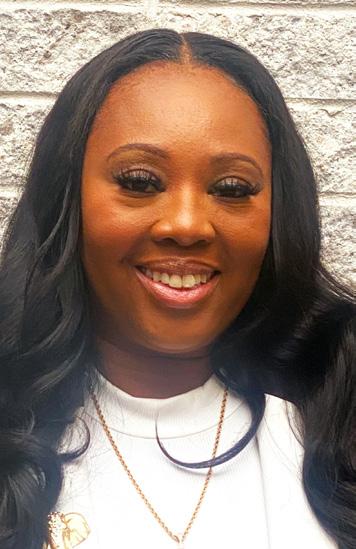
chief legislative assistant and council coordinator in the office of Rochester Mayor Malik Evans. In this capacity, she coordinates legislation across city departments and manages the council process for both the mayor's office and the Neighborhood and Business Development Department. Additionally, she works as a direct-support professional for CDS Monarch, helping individuals with mental and physical disabilities manage daily life tasks.
Rochester Regional Health (RRH) recently announced its inclusion in Becker’s Hospital Review’s esteemed list of the nation's “Top 100 Health Systems with Outstanding Oncology Programs.”
This recognition highlights the exceptional work of the Lipson Cancer Institute and its dedication to providing top-tier, patient-centered cancer care. The list recognizes institutions which have “garnered national acclaim for advancing cancer care via their cutting-edge clinical trials and life-changing research.”
Becker's Hospital Review, a leading source of business and legal information for healthcare industry leaders, evaluates hospitals and health systems based on their cancer care services, patient outcomes and overall excellence. Organizations cannot pay to be featured on this list, making this recognition a true testament to the quality of oncology
care provided by Rochester Regional Health.
“This recognition of the quality of cancer care being provided by the Lipson Cancer Institute is just one more example where Rochester Regional Health is distinguishing itself as a leader in healthcare in our community, our state and across the nation,” said Richard “Chip” Davis, Ph.D., Rochester Regional Health’s chief executive officer. “Our team’s dedication and expertise make us a leader in oncology, and we are grateful that they go above and beyond to ensure that our patients and their families receive the best care possible.”
This recognition by Becker’s comes on the heels of another recent accreditation for Rochester Regional Health. In August, the Lipson Cancer Institute received a three-year full accreditation as a Network Cancer Program from the American College of Surgeons Commission on Cancer. This accolade distinguishes Rochester General and Unity Hospitals as the only network of cancer centers in upstate New York granted this honor.
“Lipson Cancer Institute is proud to have met the rigorous guidelines required by the American College of Surgeons to achieve this prestigious accreditation,” said physician Prad Phatak, executive medical director of oncology at RRH. “This honor underscores the work of our multidisciplinary oncology teams who tirelessly provide gold-standard cancer care for our patients while understanding that treatment extends far beyond the physical to include mental and emotional health as well.”
UR Medicine Finger Lakes Health’s Foundation board of directors has elected new board members. They are:
• Alexis Ogra serves as the chief of staff for New York State Assemblyman Jeff Gallahan in his Geneva office. She earned her Bachelor of Art degree in history from University at Buffalo. Originally from Buffalo, Ogra now lives in Victor with her husband and daughter. She is a member of the Victor Town Board.
• Physician J. Nicole Taylor is a board-certified diagnostic radiologist with Finger Lakes Radiology in Geneva. She completed her residency in radiology at SUNY Upstate Medical University in Syracuse. Prior to that she did her surgical internship at Beth Israel Medical Center in New York. She attended medical school at New York College of Osteopathic Medicine in Old Westbury and belongs to the American Board of Radiology, the American Roentgen Ray Society and the American College of Radiology. She has been recognized with the E. Robert Heitzman Award for Teaching Excellence. She lives in Seneca Falls with her husband and two children.
• Diana Smith serves as the municipal client northeast director for MRB Group located in Rochester. In 2004 she was elected Seneca Falls’ first female mayor, where she served two terms. She earned her Bachelor
of Arts degree in philosophy and humanities from Westminster College, in Fulton, Missouri. Smith is a former president of the New York Conference of Mayors and, is a founding member and current board president of the Women’s Institute for Leadership and Learning, as well as a longtime supporter and volunteer at the National Women’s Hall of Fame. Smith lives in Seneca Falls with her husband.
In addition, the following officers were elected: Joan Grela, chairwoman; Susan Eisenhart, vice chairwoman; Barbara Reese, secretary; physician Jose Acevedo, president; Trisha Koczent, treasurer, and Kim Ilacqua, executive director.
UR Medicine Thompson Health recently named five of its associates as third-quarter 2024 Service Excellence Award winners.
Recipients of the quarterly award are chosen by the health system’s service excellence team, which reviews compliments from patients, families, and coworkers submitted by system leaders.
Chosen for the honor by the health system’s service excellence team were:
• Thomas Bonfiglio of Pittsford, a registered nurse in the emergency department.
• Hayden Halstead of Canandaigua, a registered nurse in the hospital’s RN residency program.
• Alexandria Michaels of Lyons, a nurse practitioner in internal medicine at the Canandaigua Medical Group.
• Lauren Paraison of Rochester, an OBGYN physician with the Canandaigua Medical Group.
• Lisa Years of Canandaigua, a registered nurse in urgent care.
Each recipient of the Service Excellence Award receives points to be used on Thompson’s online shopping site and is featured in CEO presentations as well as on Thompson’s intranet site and in its internal newsletter.
UR Medicine Thompson Health recently received platinum recognition in the American Heart Association’s 2024 Well-being Works Better Scorecard.
According to the Association, the scorecard brings together emerging research and input from leading experts to help employers create a healthy and effective work environment. Organizations can earn a recognition level of bronze, silver, gold or platinum based on their adherence to the association’s science-backed recommended practices in areas such as health equity, burnout prevention, compensation and benefits, and more.
Thompson had received gold recognition on the scorecard in the past by meeting many of the standards.
"A gap analysis was prepared and the wellness team planfully met the standards to get enough points to push us up to platinum," said
Vice President of Associate Services/ Wellness Jennifer DeVault. She noted that Wellness Wednesdays — when associates get discounted healthy salad bar items — was just one of the recent additions to programming.
Wellness Coordinator Kristen Seyfried said the department has been working to close the gap and go from gold to platinum for the past two years, implementing new programs and creating new policies.
In addition to Wellness Wednesdays, new programming has included Mental Health First Aid training, support groups for associates and conducting an Associate Wellness Survey. Wellness has also offered physical activity programs at low or no cost, and provides TheCare.com benefit for pet care.
UR Medicine has opened a $25 million, 45,000 square-foot medical outpatient building in Geneseo that offers a convenient, one-stop destination for primary care, specialty services, labs and outpatient procedures. Adjacent with the UR Medicine Noyes Health Services building that has been serving patients for years on East South Street, the two buildings comprise the Geneseo Medical Campus and provide virtually all ambulatory medicine needs patients in Geneseo and surrounding areas need.
The new building, which opened Oct. 21, consolidates several UR Medicine outpatient services that had been operating in other locations in and around Geneseo; it also introduces new services to the area, including urology; pediatric and adult allergy services; outpatient procedures for urology and ENT; and an optical shop.
The specialty services that relocated to the new building include: primary care, labs patient service center, cardiology, ENT, audiology, Flaum Eye Institute, orthopedics and podiatry and pediatric and adult allergy
“The new Geneseo building is a great addition to our regional network of ambulatory facilities and hospitals that provide comprehensive, close-to-home medical care to patients throughout the Finger Lakes region,” said Kathy Parrinello, president and CEO of Strong Memorial and Highland hospitals. “Co-locating multiple specialty services, plus diagnostic services like clinical labs and imaging in one setting is convenient for patients and a highly efficient way for us to deliver care. The services in the new site build on the great services Noyes Hospital has been offering patients for many years.
“Establishing advanced ambulatory facilities like this in the region also helps us recruit providers and staff from these areas who want to pursue their medical careers close to home and provide care to people in their communities,” she added.
The UR Medicine Geneseo campus received $1.5 million in federal funding for equipment at the Noyes Health Services facility to expand and improve services.

Excellus BlueCross® BlueShield® is committed to improving maternal health outcomes. Through investments in local nonprofits and creating our Bright Beginnings program, we’re supporting expecting parents in our communities.

To learn more about our efforts to reduce racial disparities in maternal health visit ExcellusBCBS.com

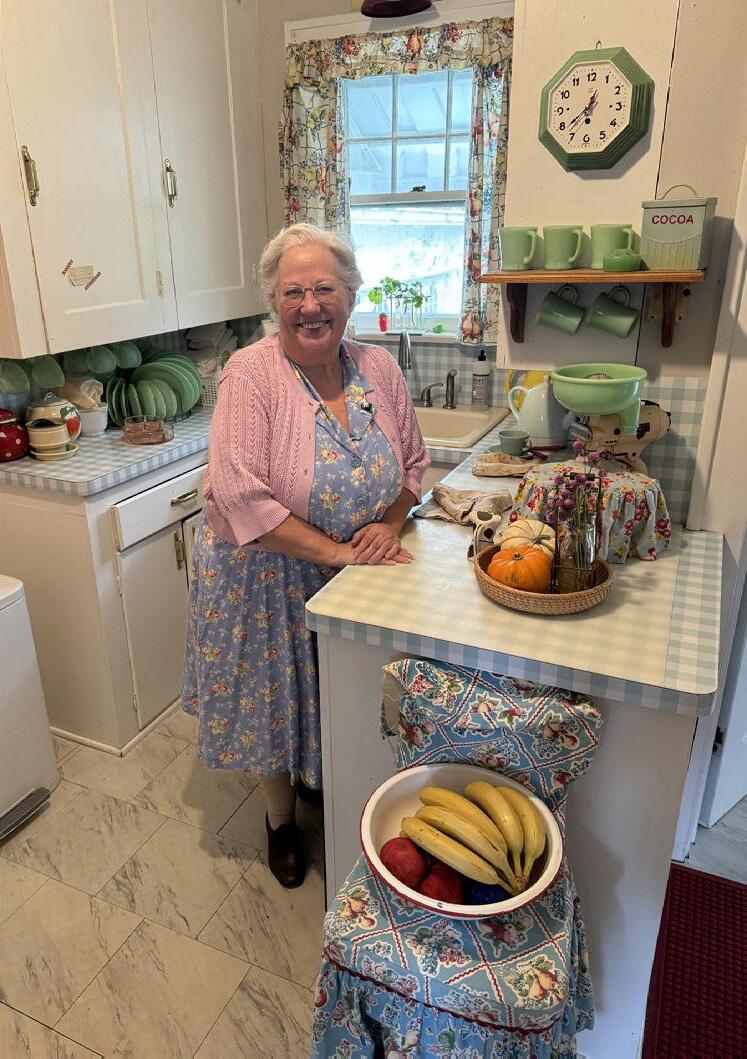


DON’T MISS THE NEW ISSUE AND THESE STORIES
Holidays — Shortage of nurses, doctors … Santas?
• Fitness— Traveling personal trainer Anja Jabs-Devins is all about keeping clients and students moving
• Entrepreneurship — Penfield inventor develops patented skincare applicator
Photography—Scott’s Photo by Rowe on East Ave. has been in operation since early 1980s
Cover — Curiosity and a desire to help others have fueled the career of Dr. Lisa Harris of Excellus BCBS
• Pets —Things you need to consider before adopting
•Jobs — Forced retirement: What should you do next?
• Vintage — Chubby vintage nana from Albion is a social media sensation
• Money — Smart money moves for 2025
• New Year —Get organized in 2025. We show how to do it ...and so much more!
SUBSCRIBE to 55Plus, the only magazine
active adults in Rochester!
